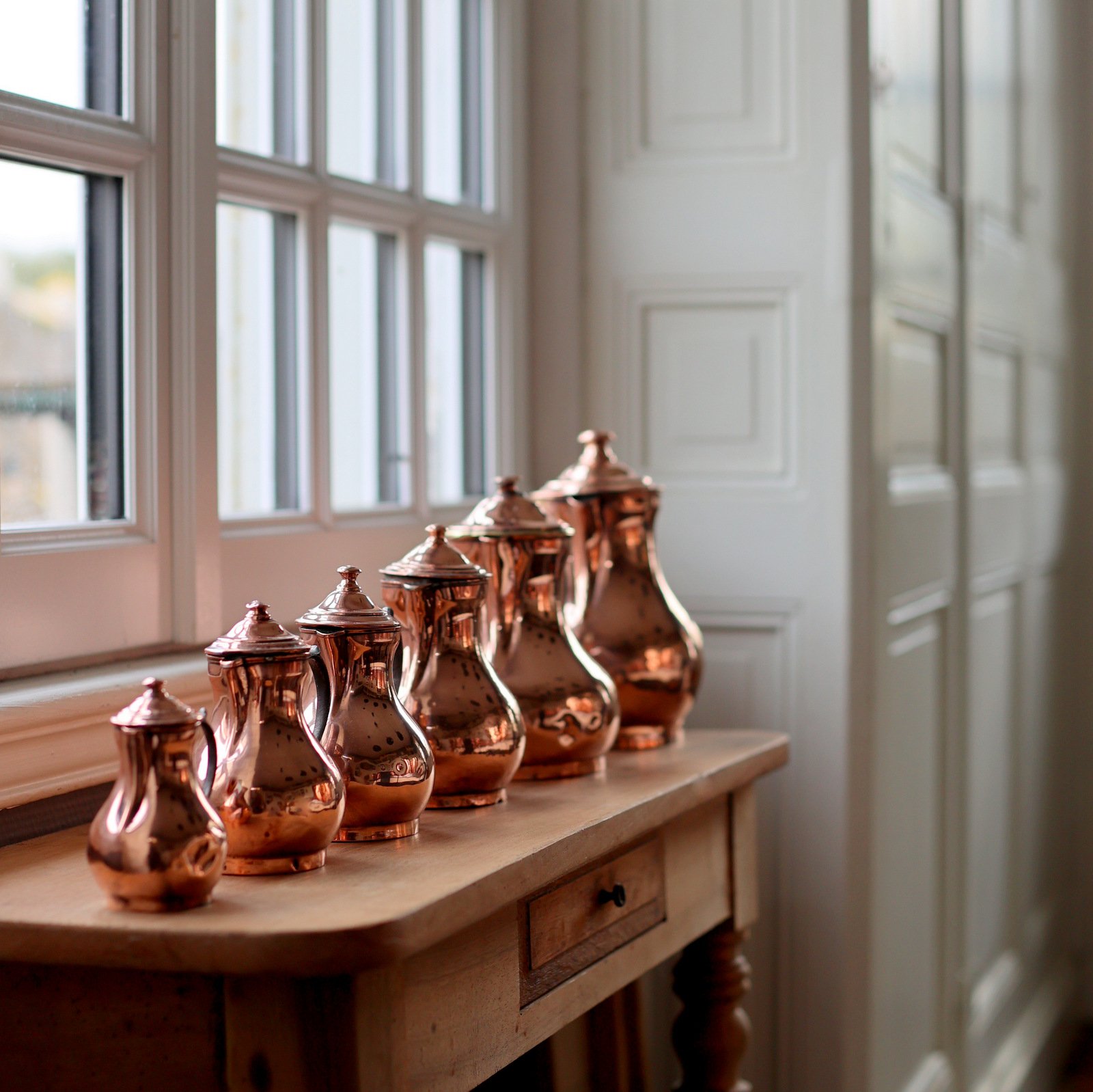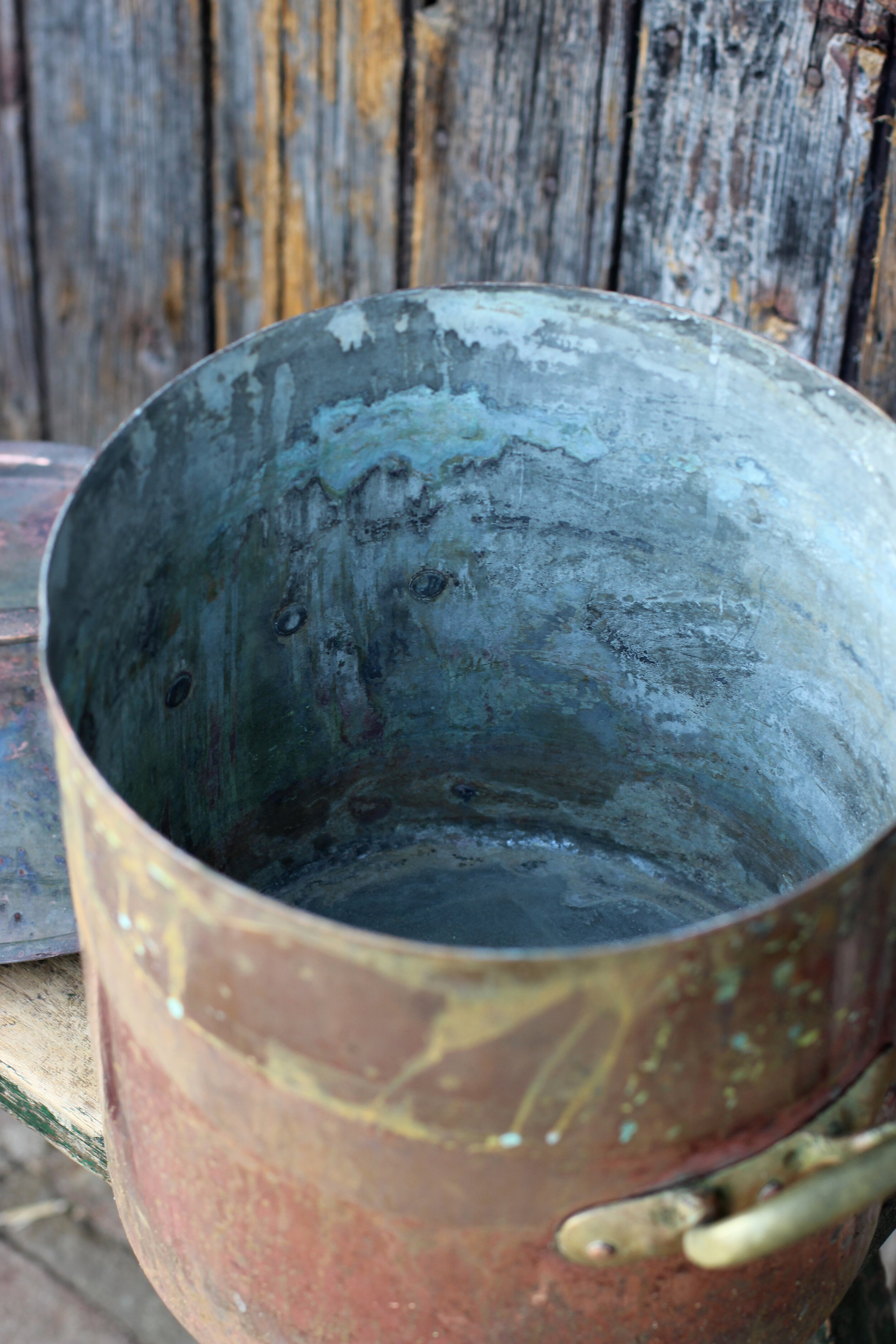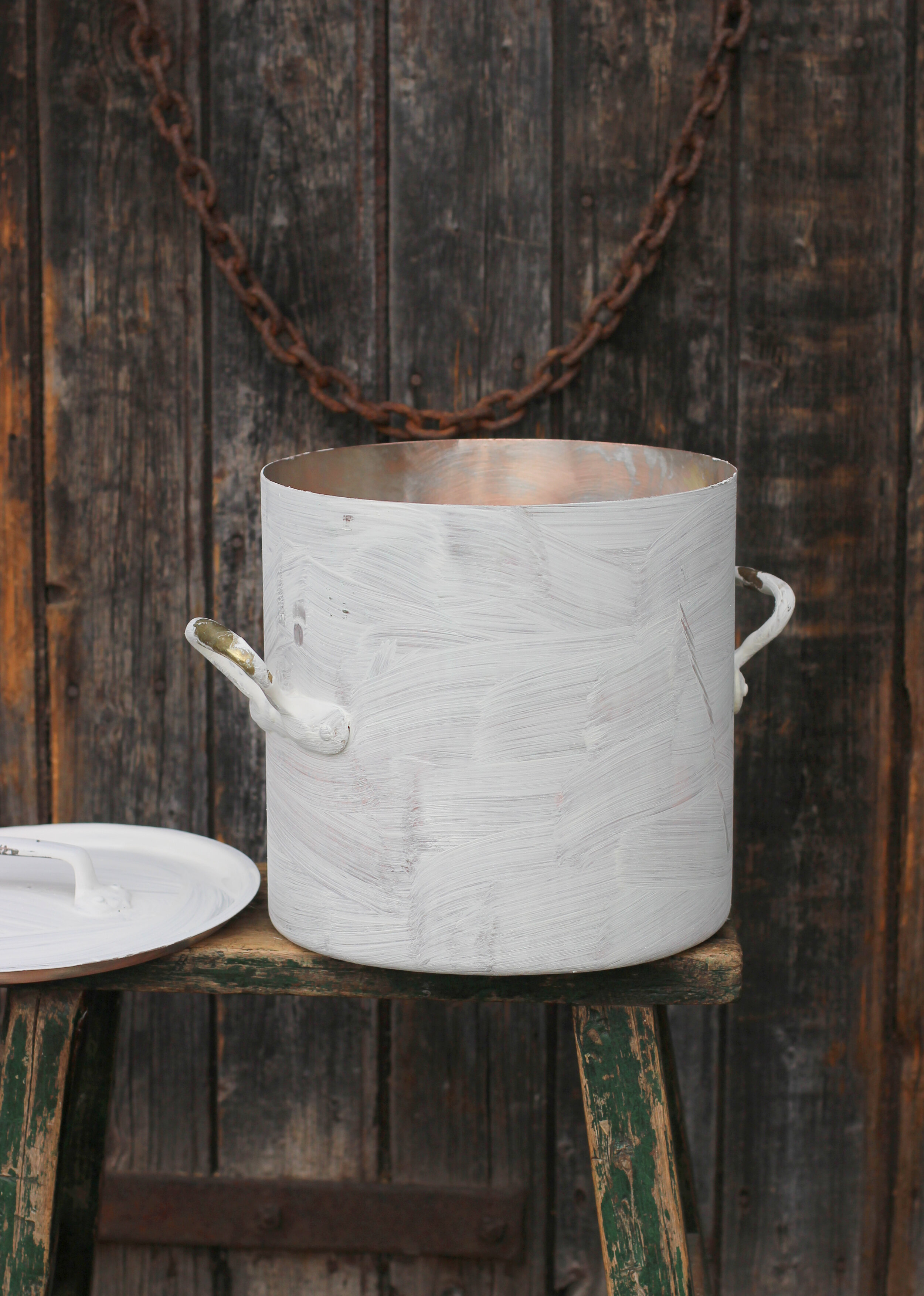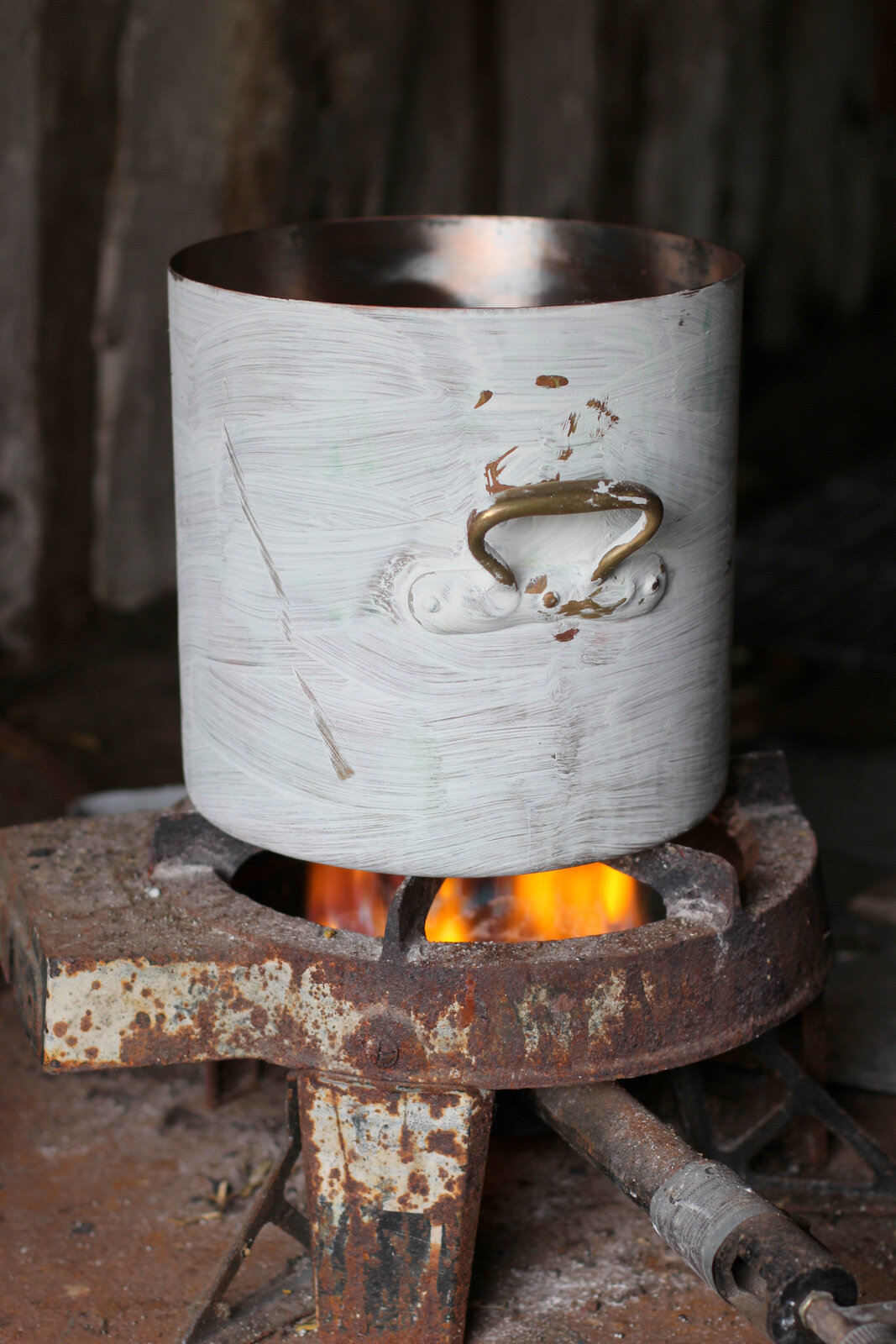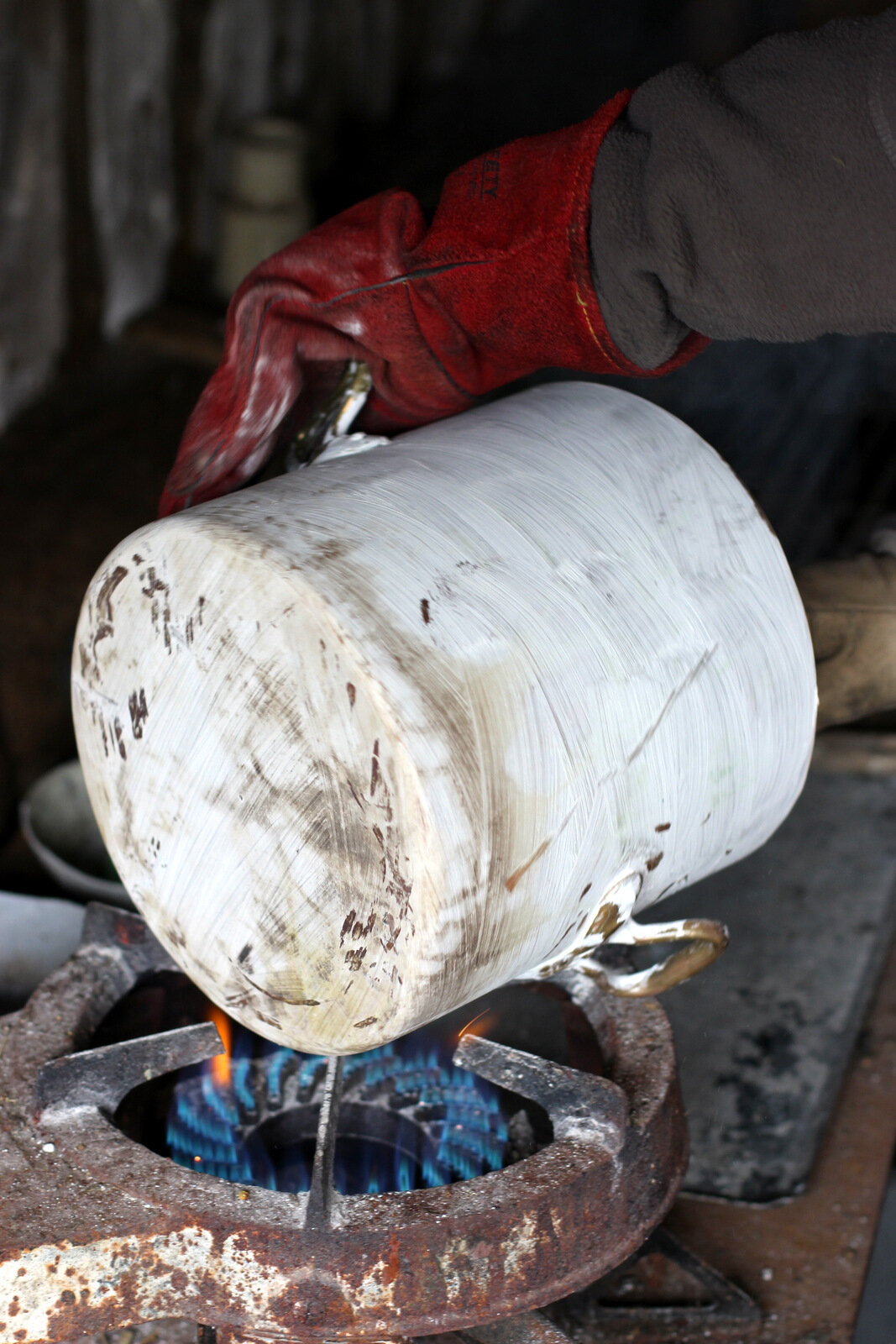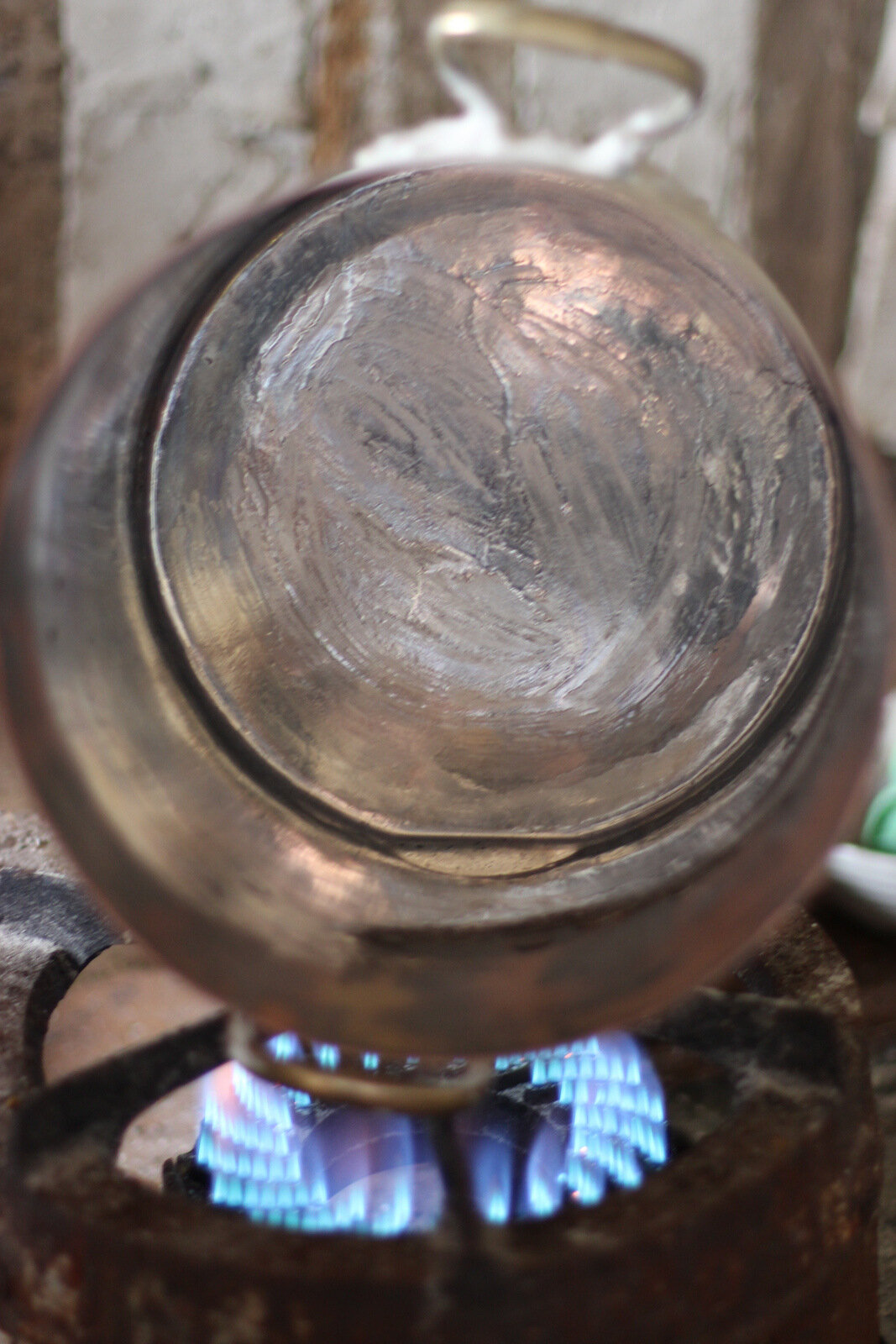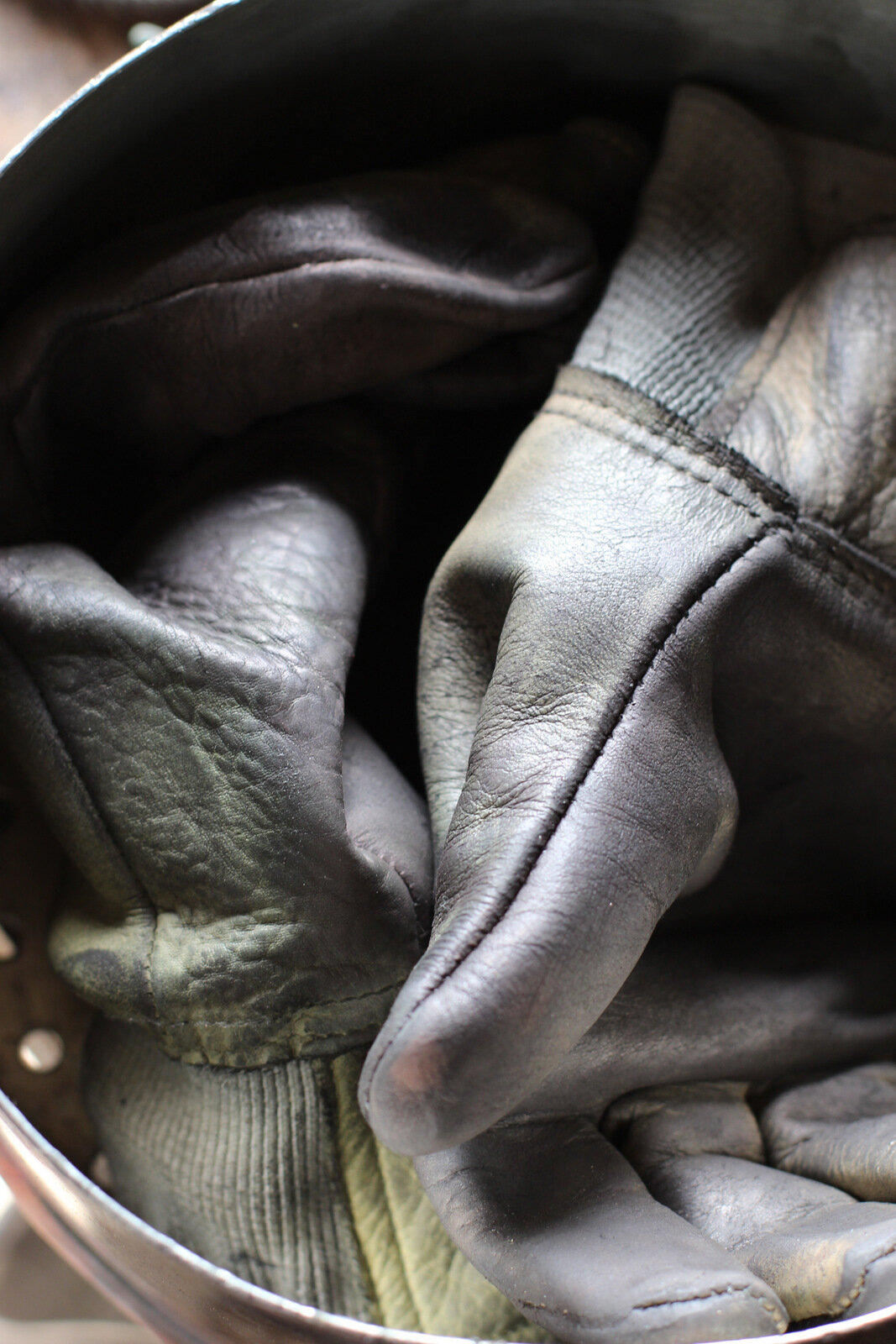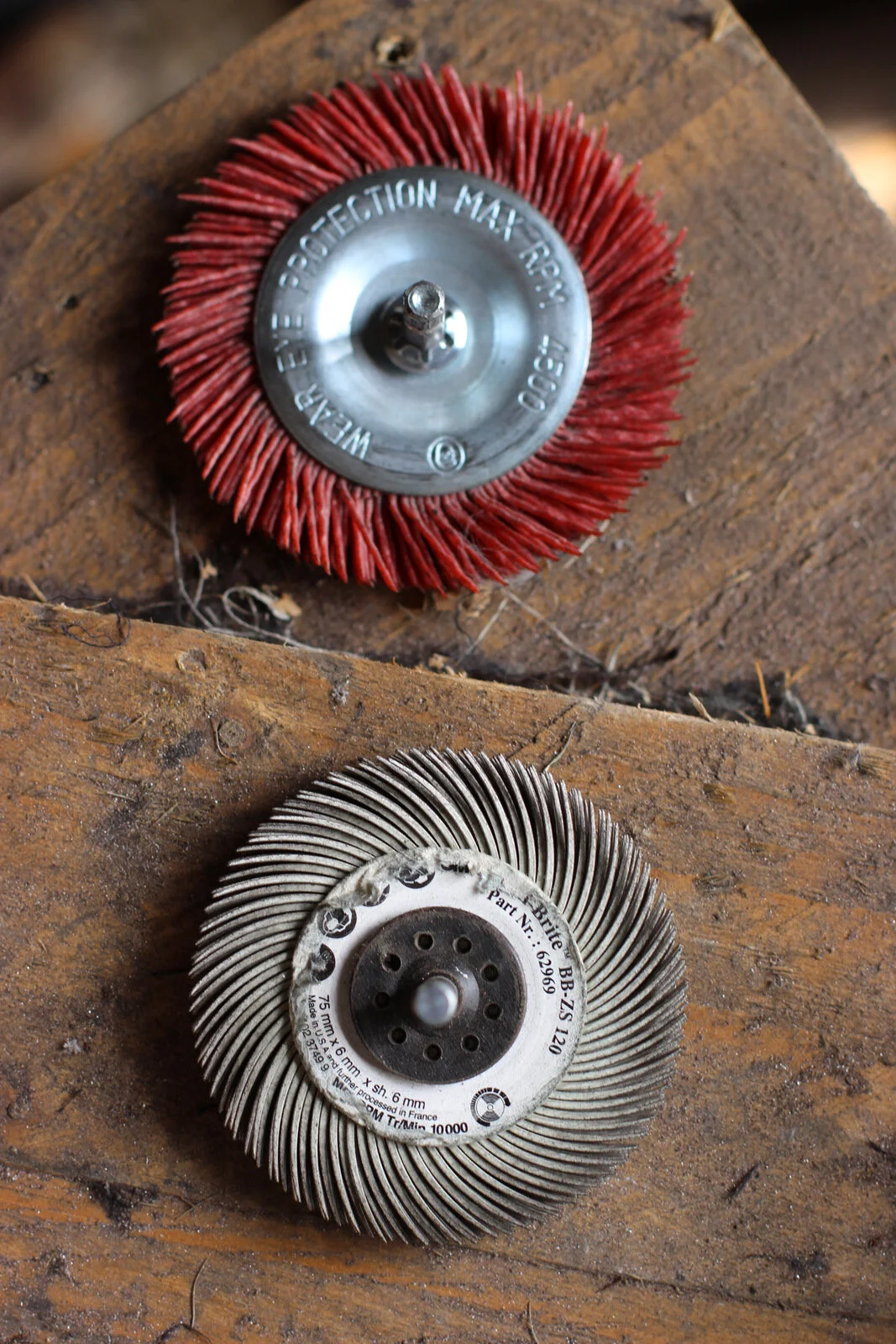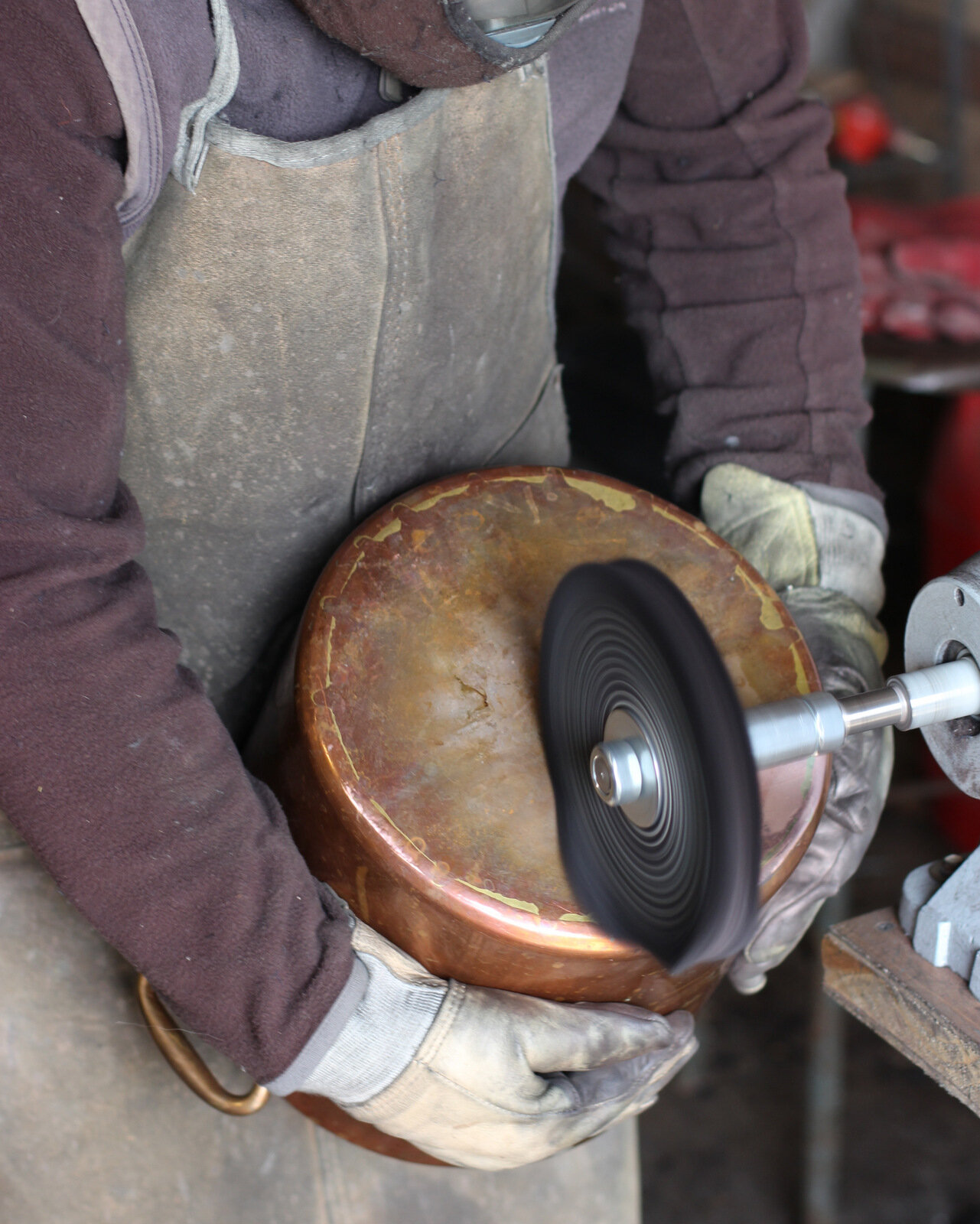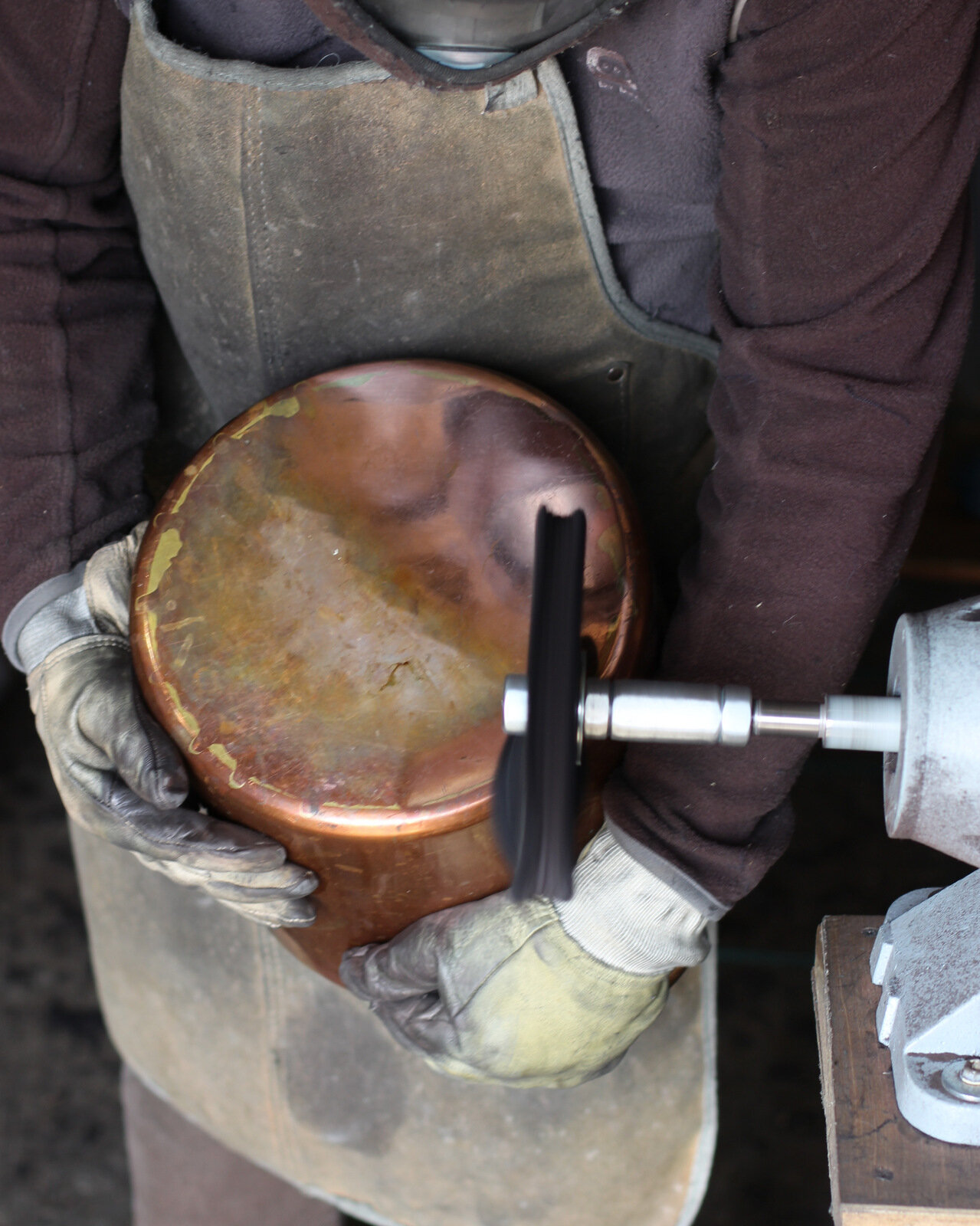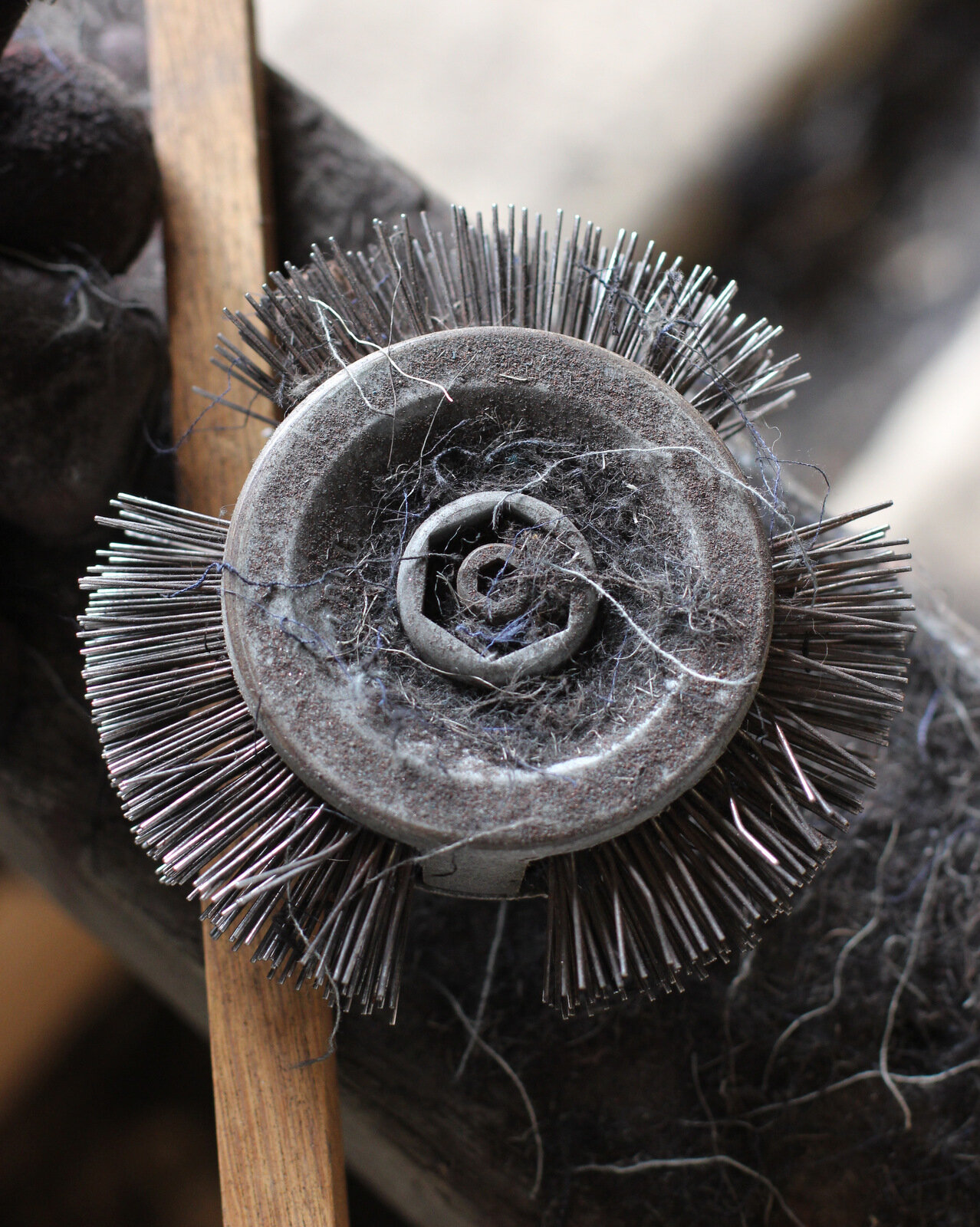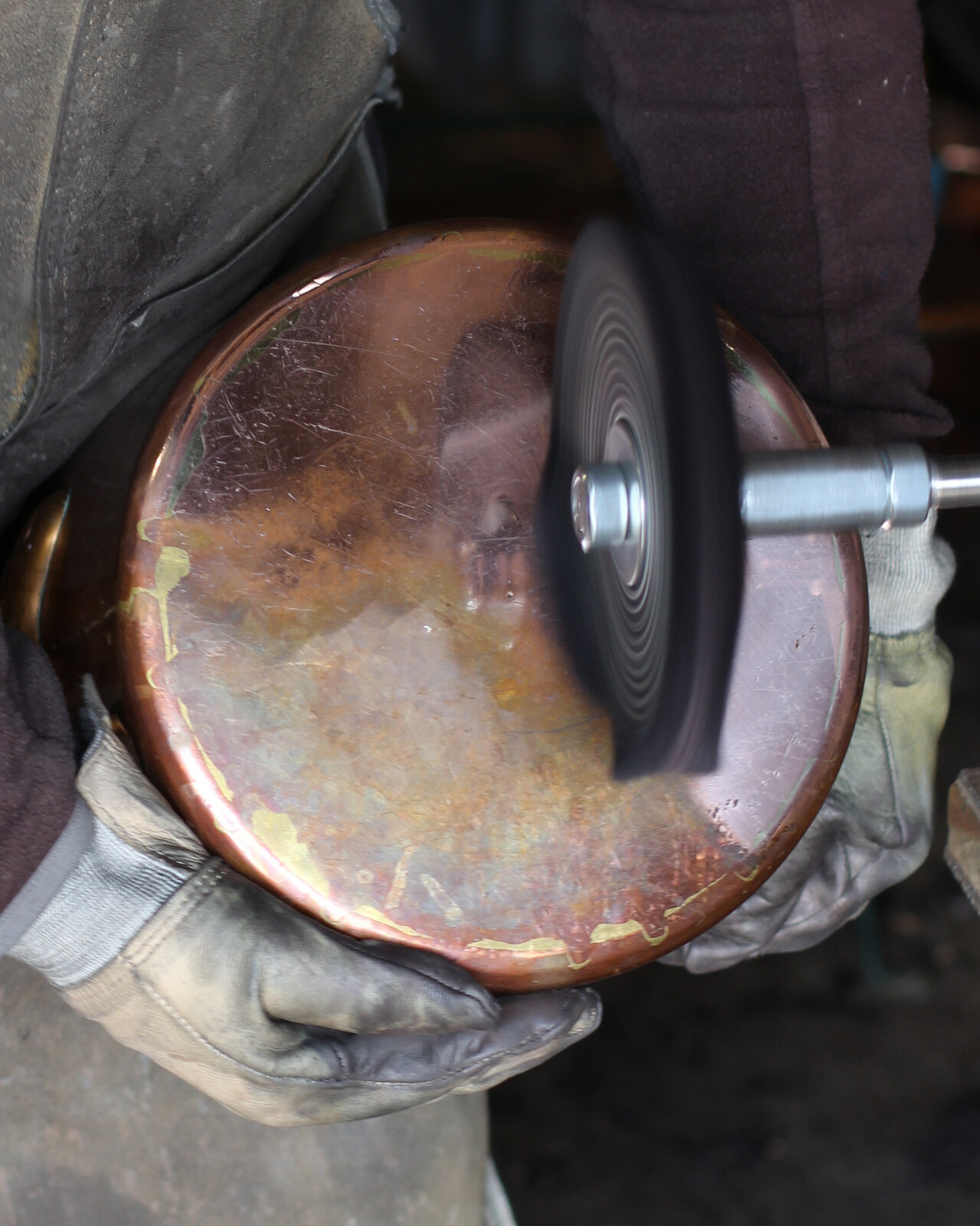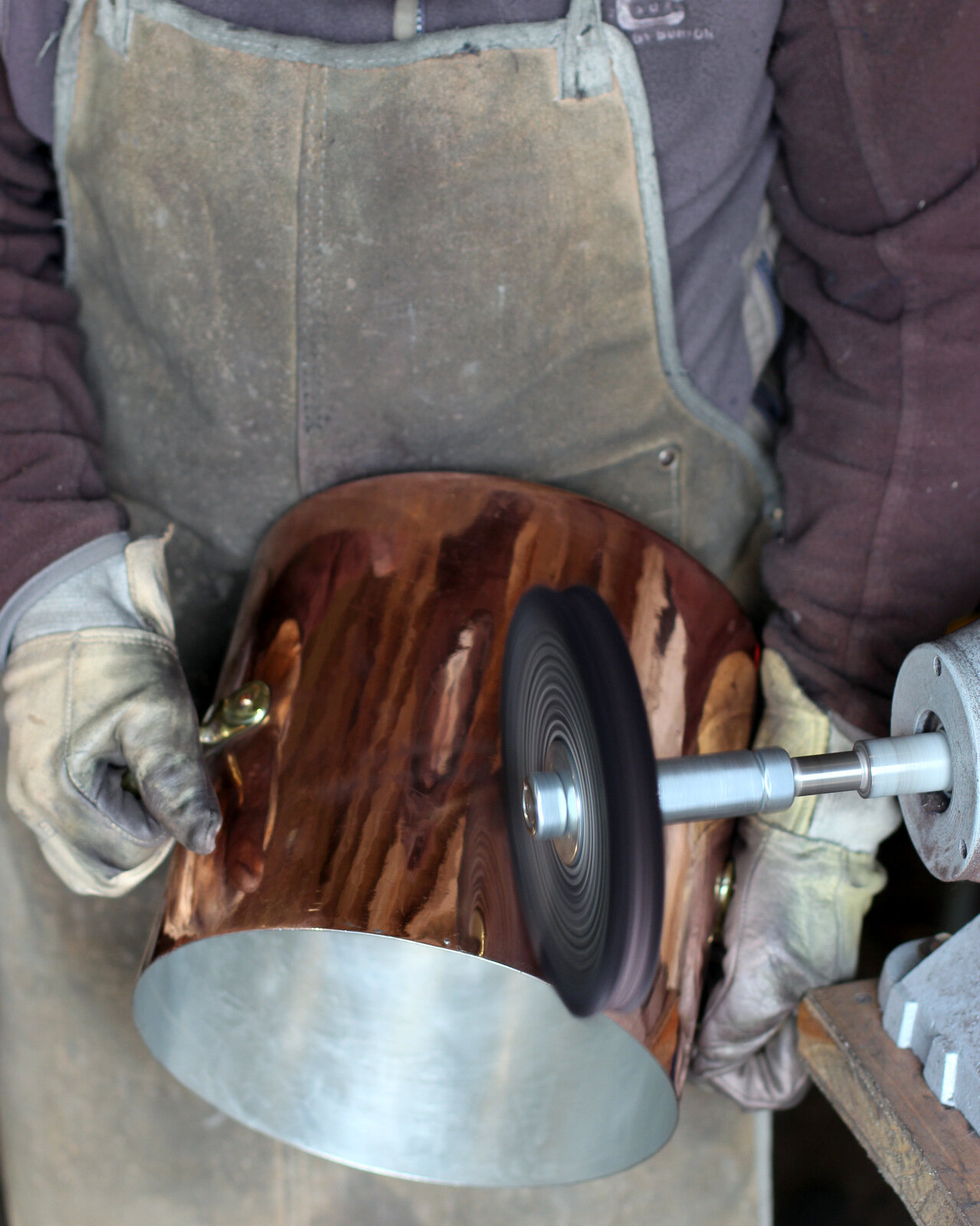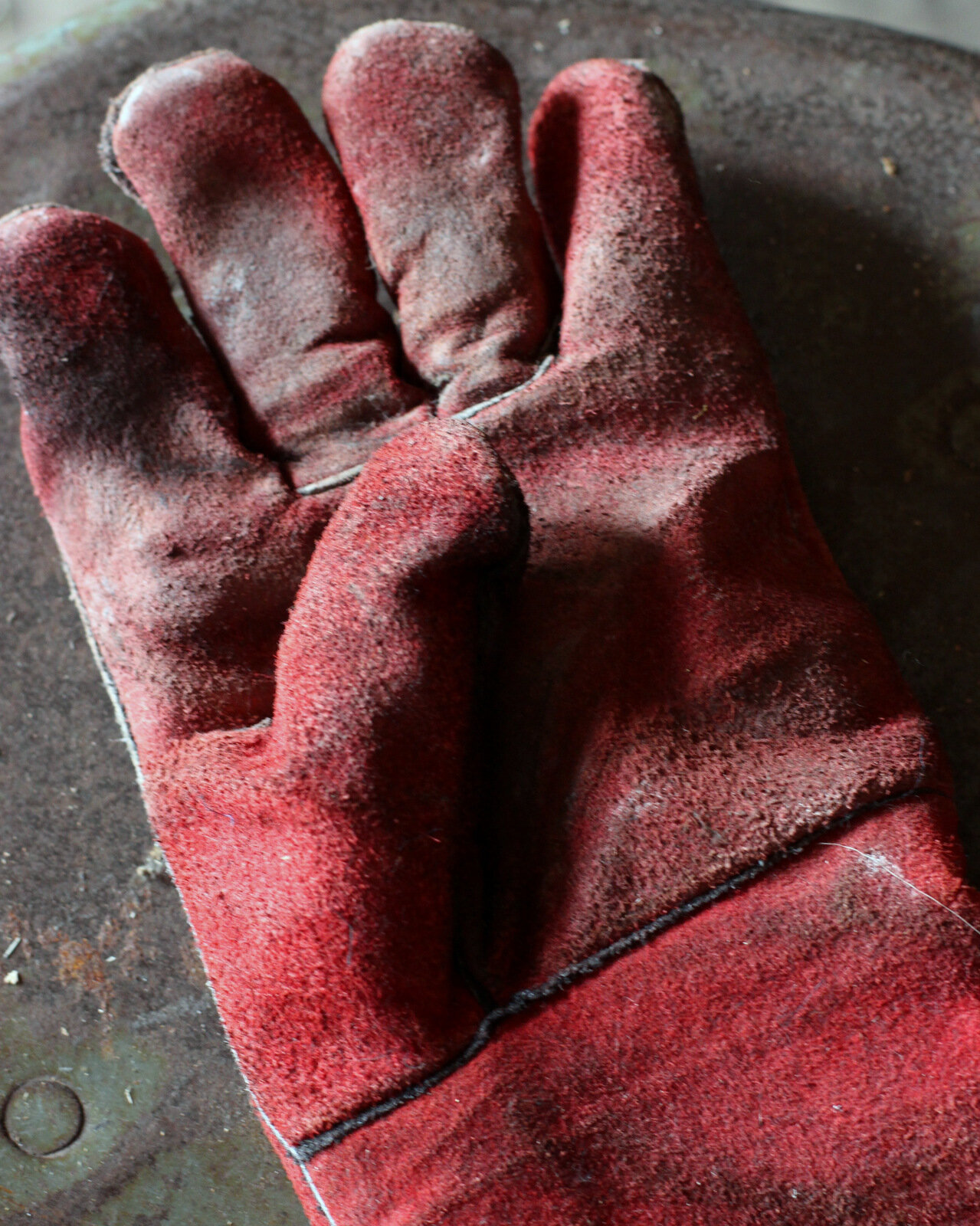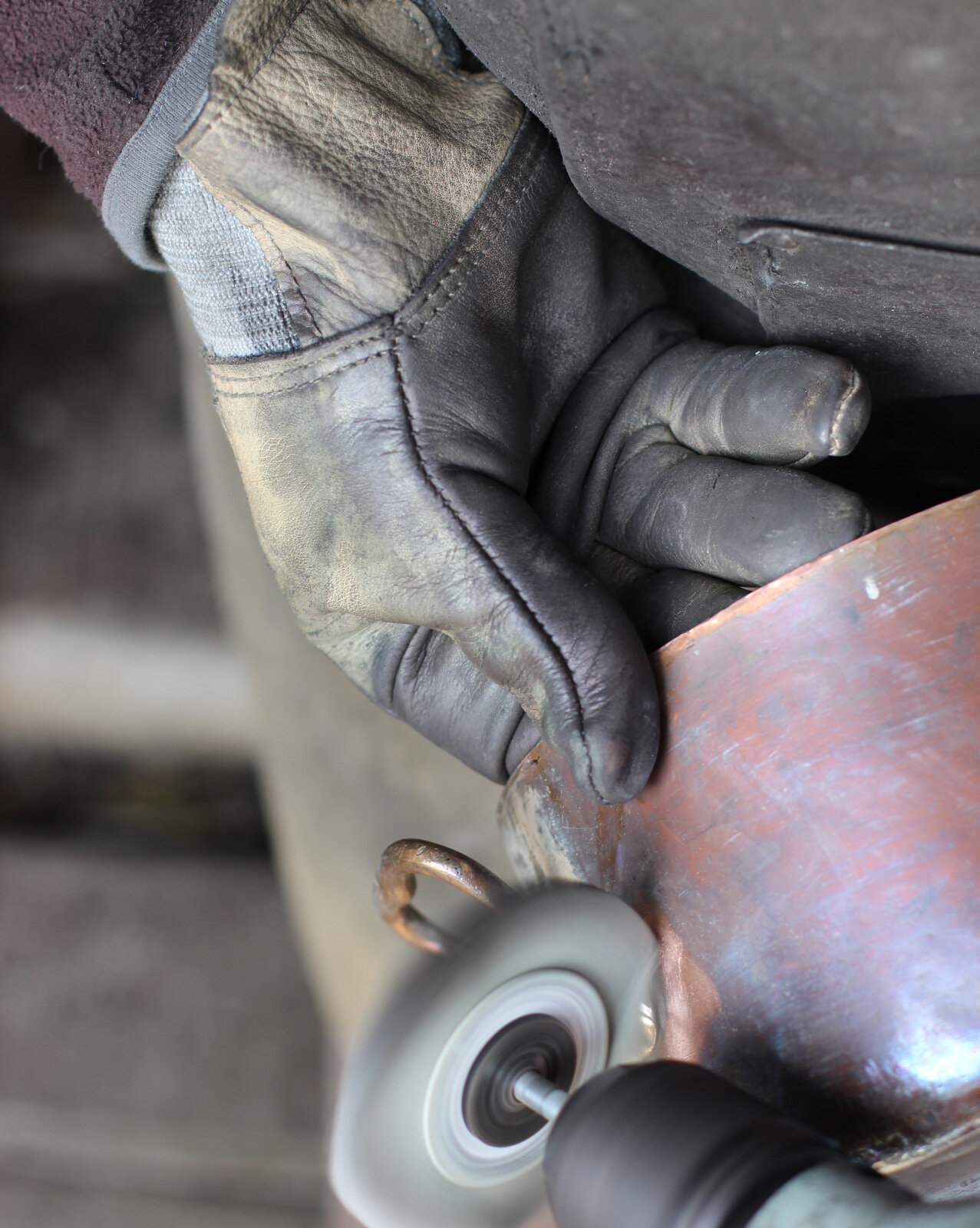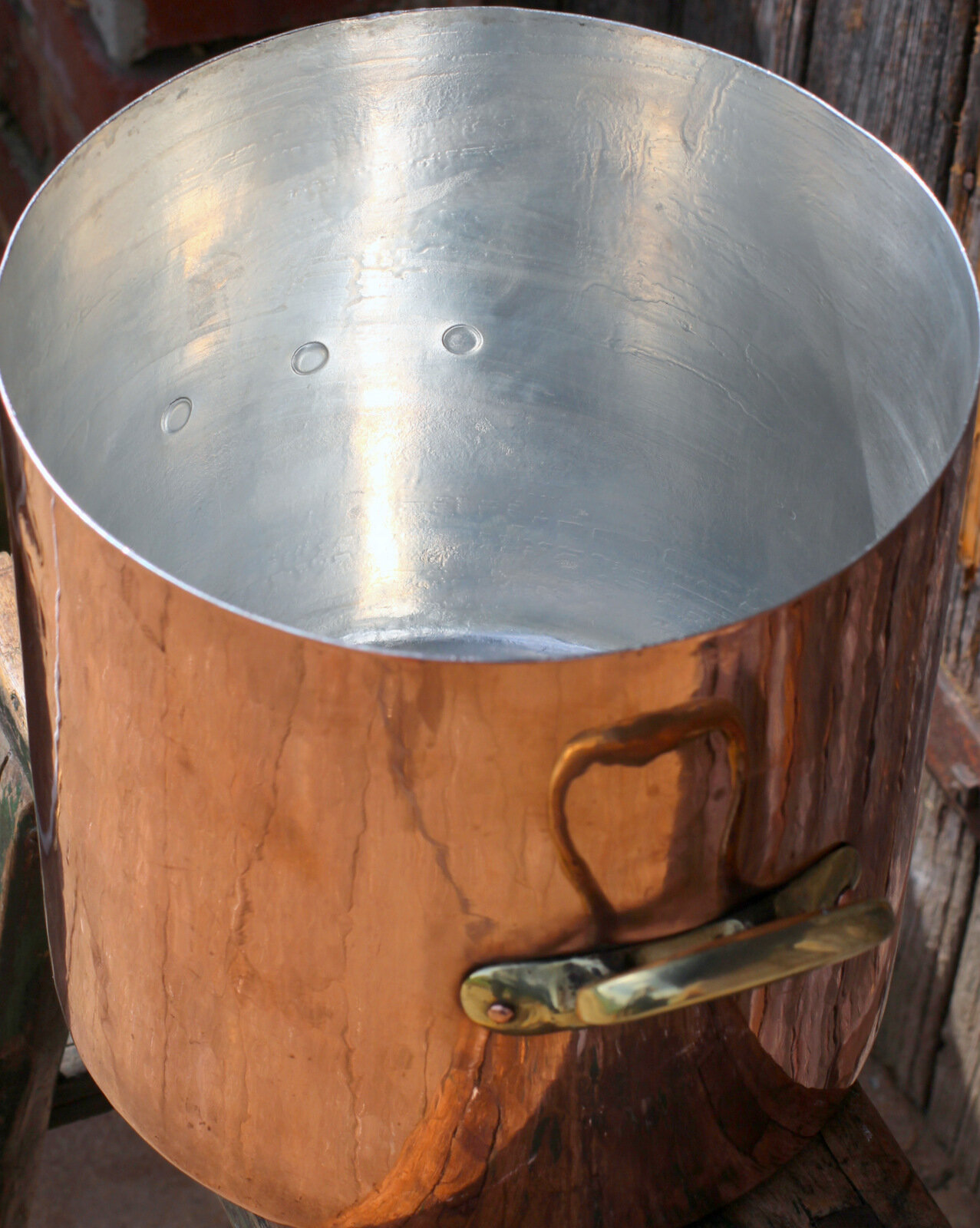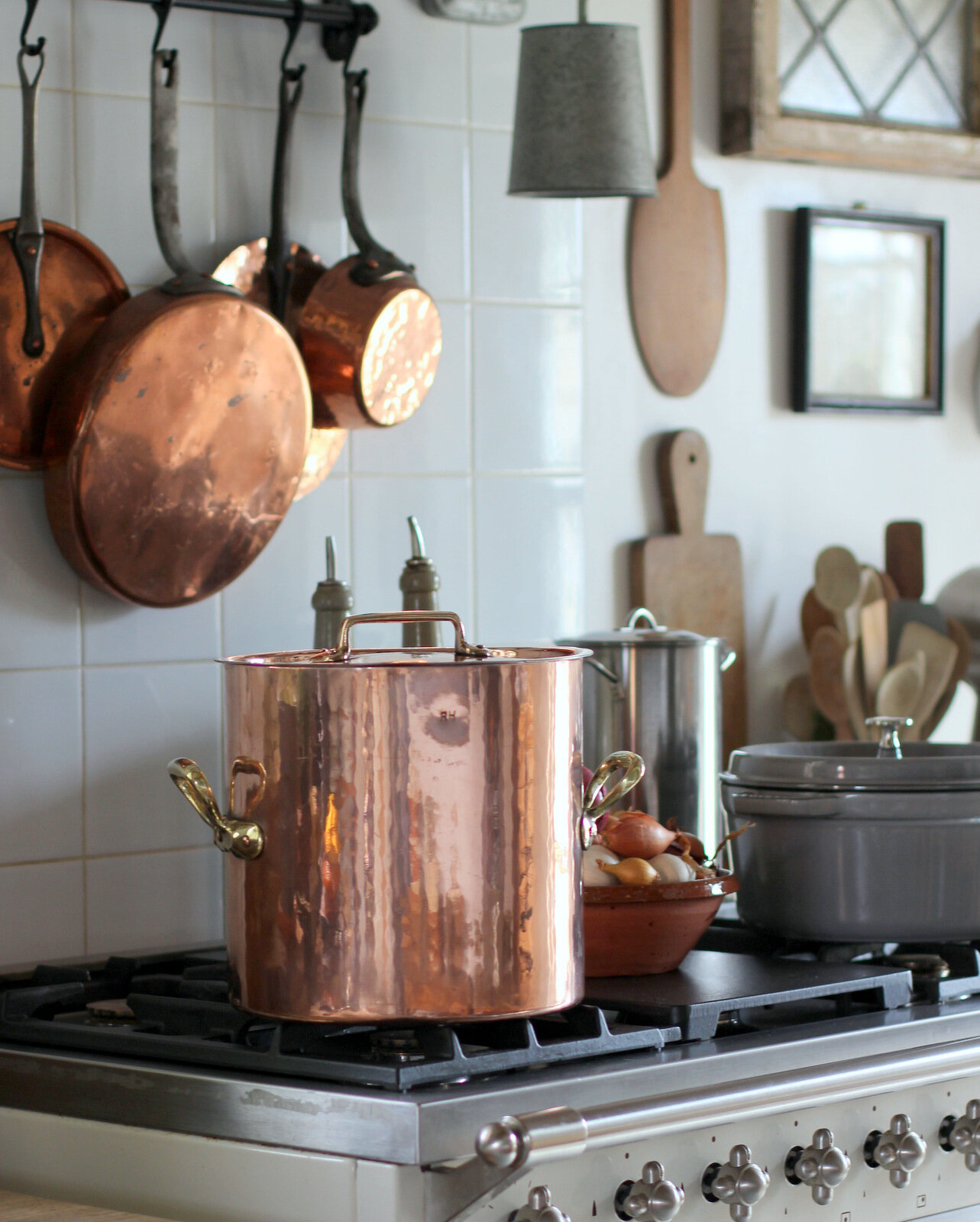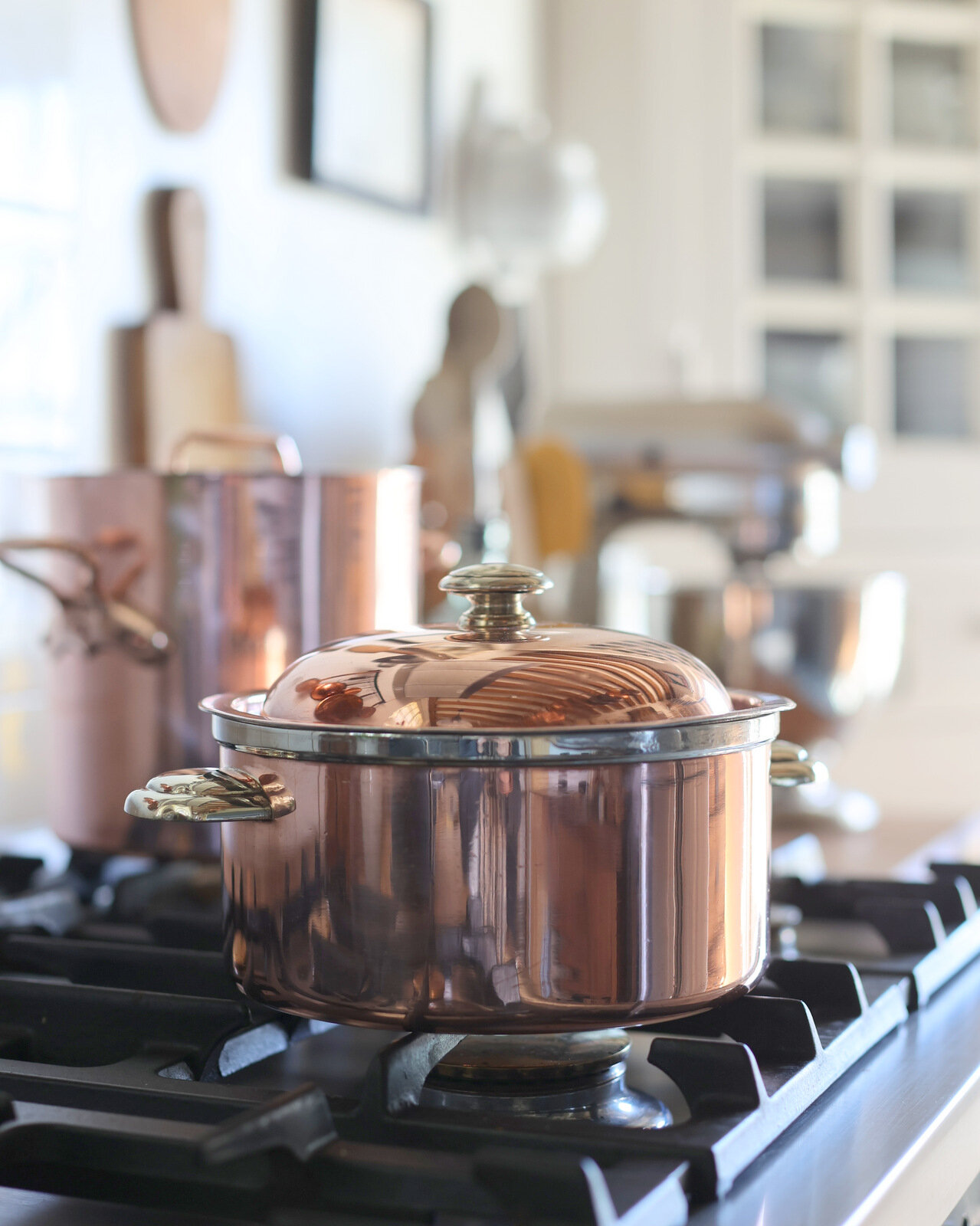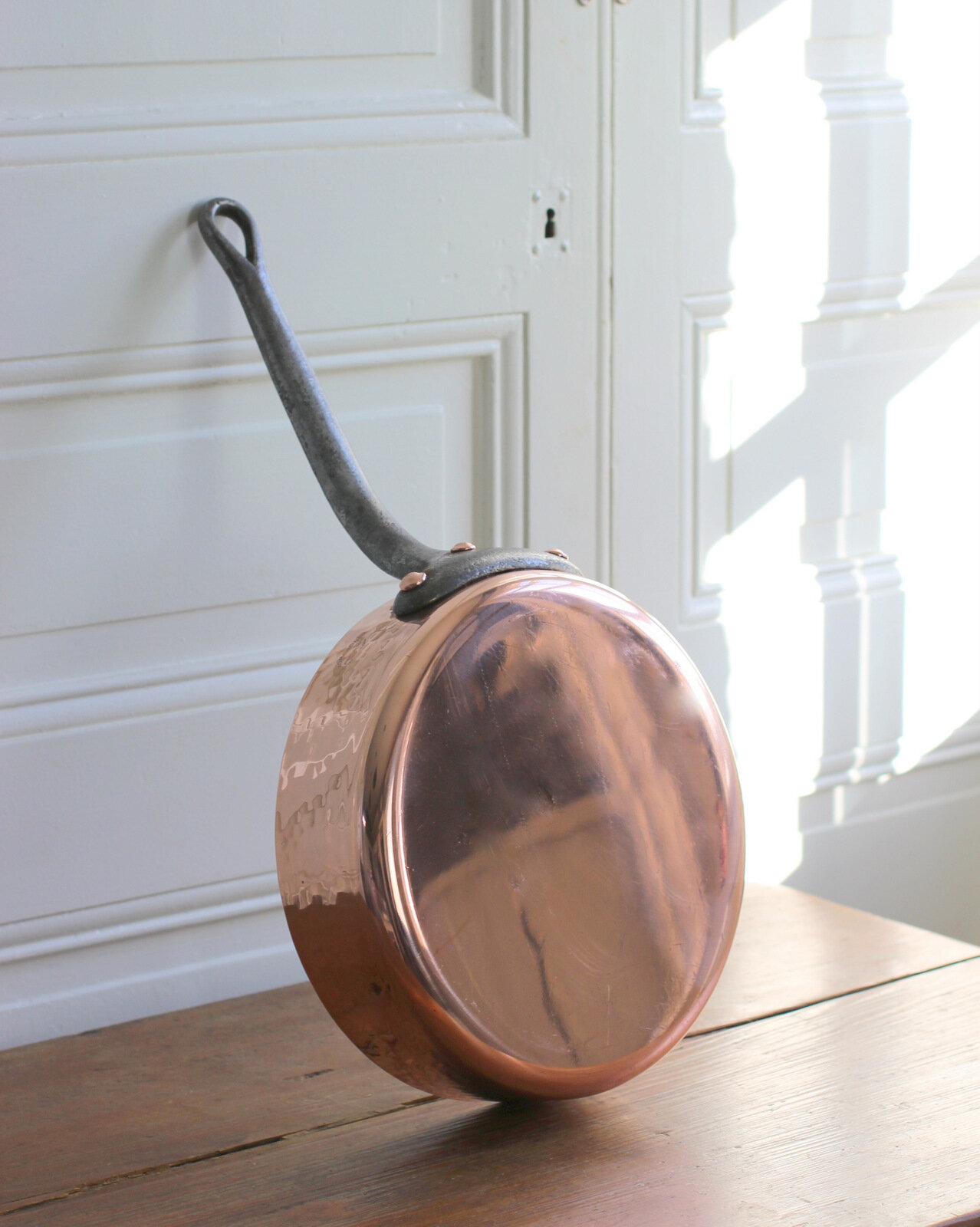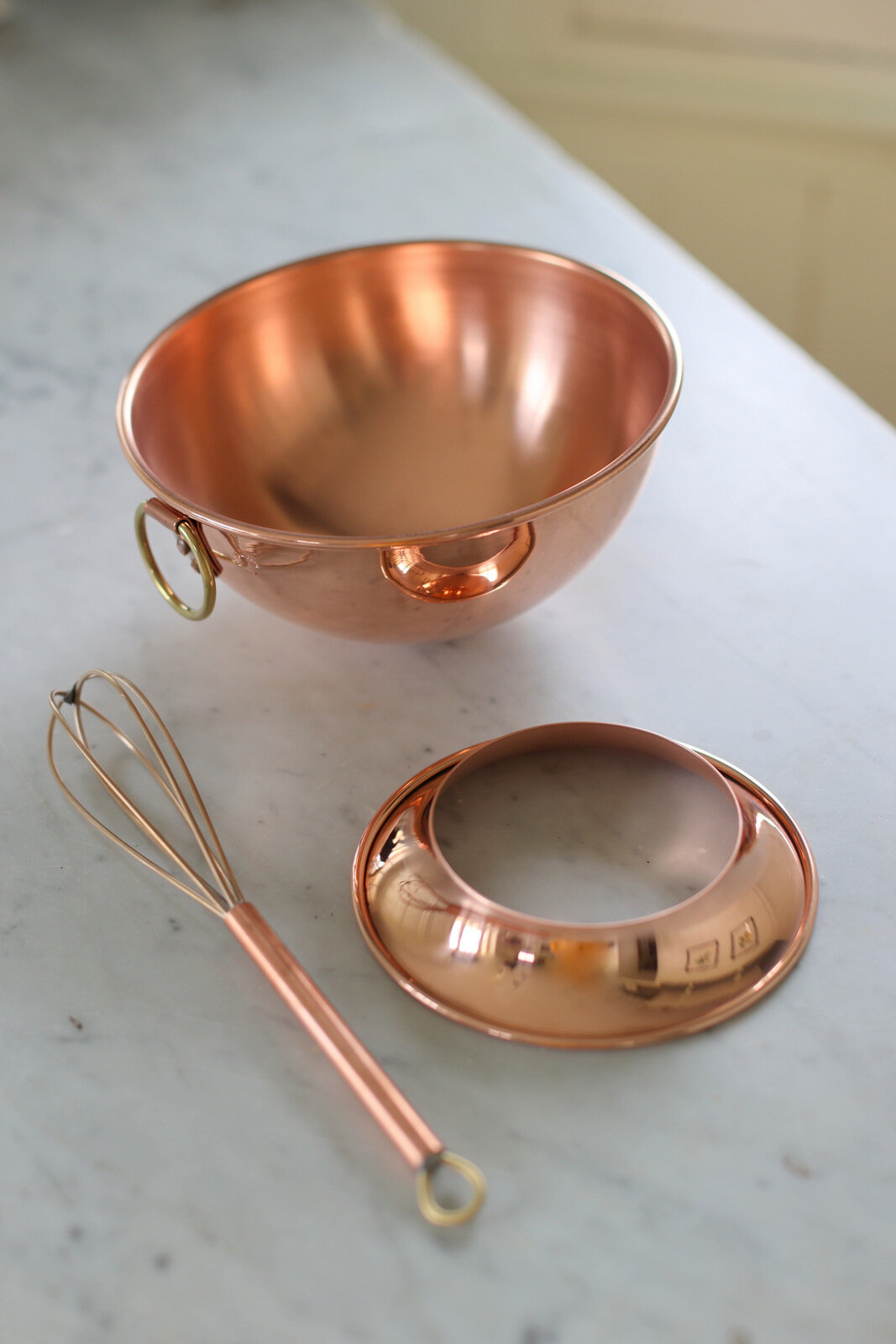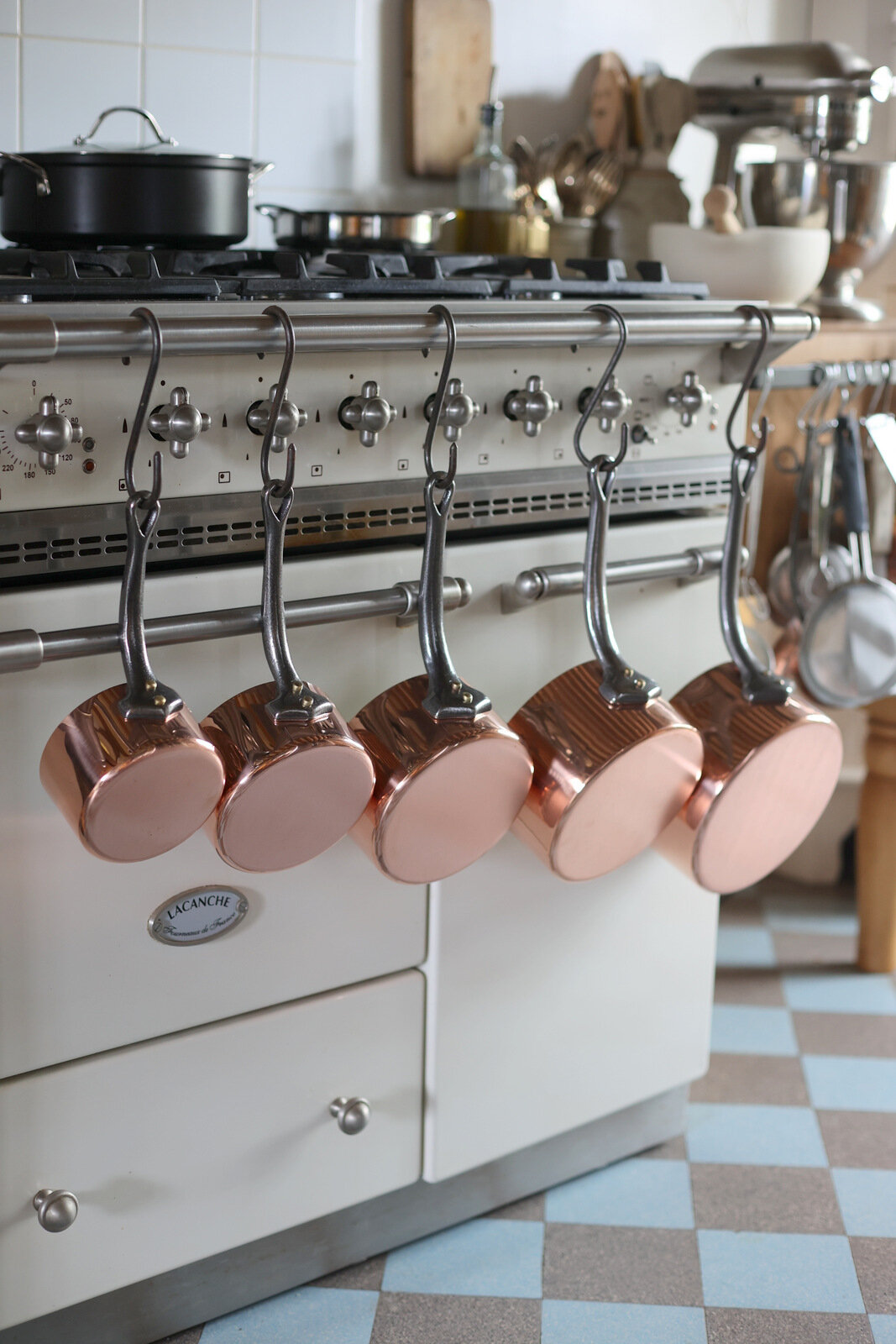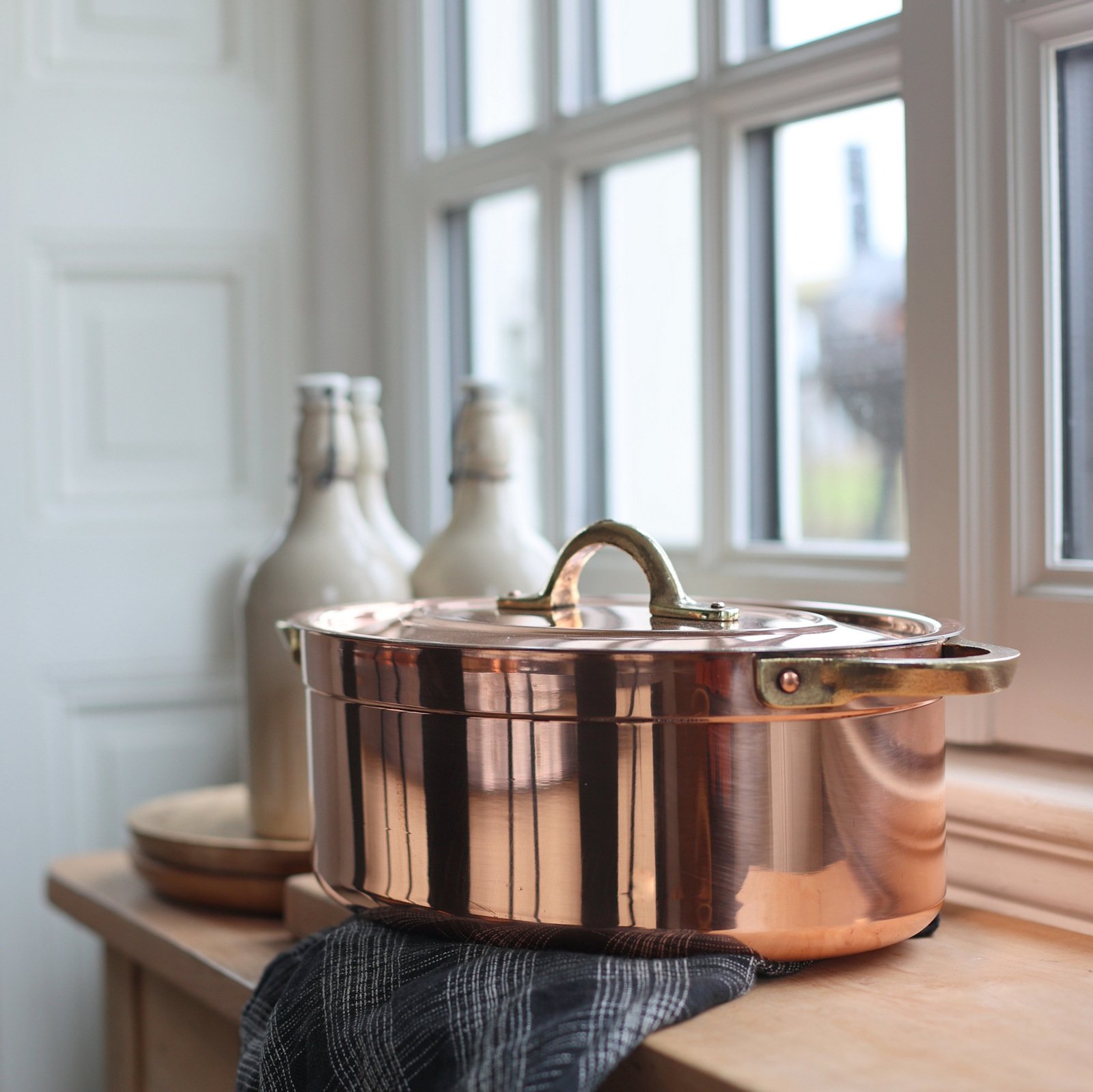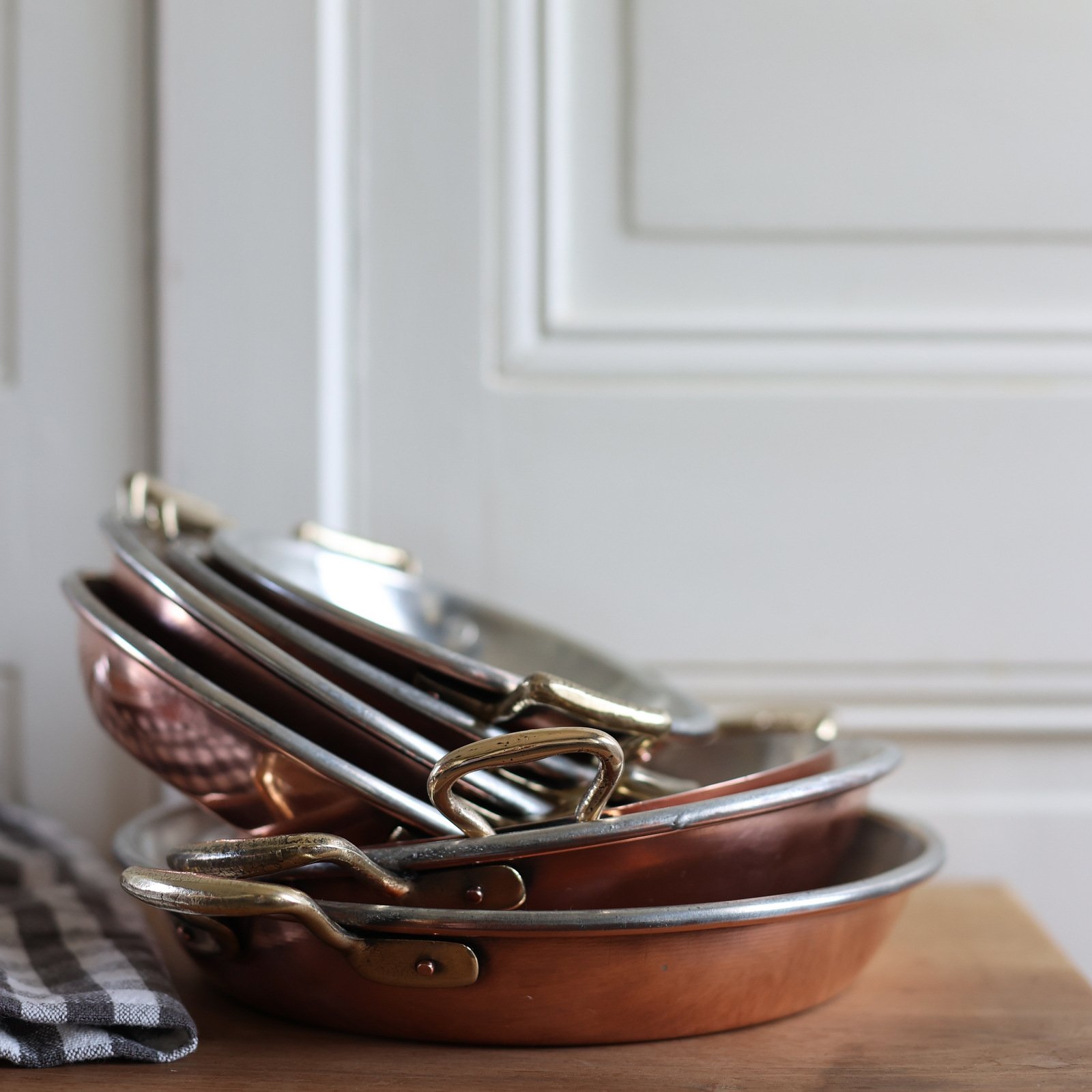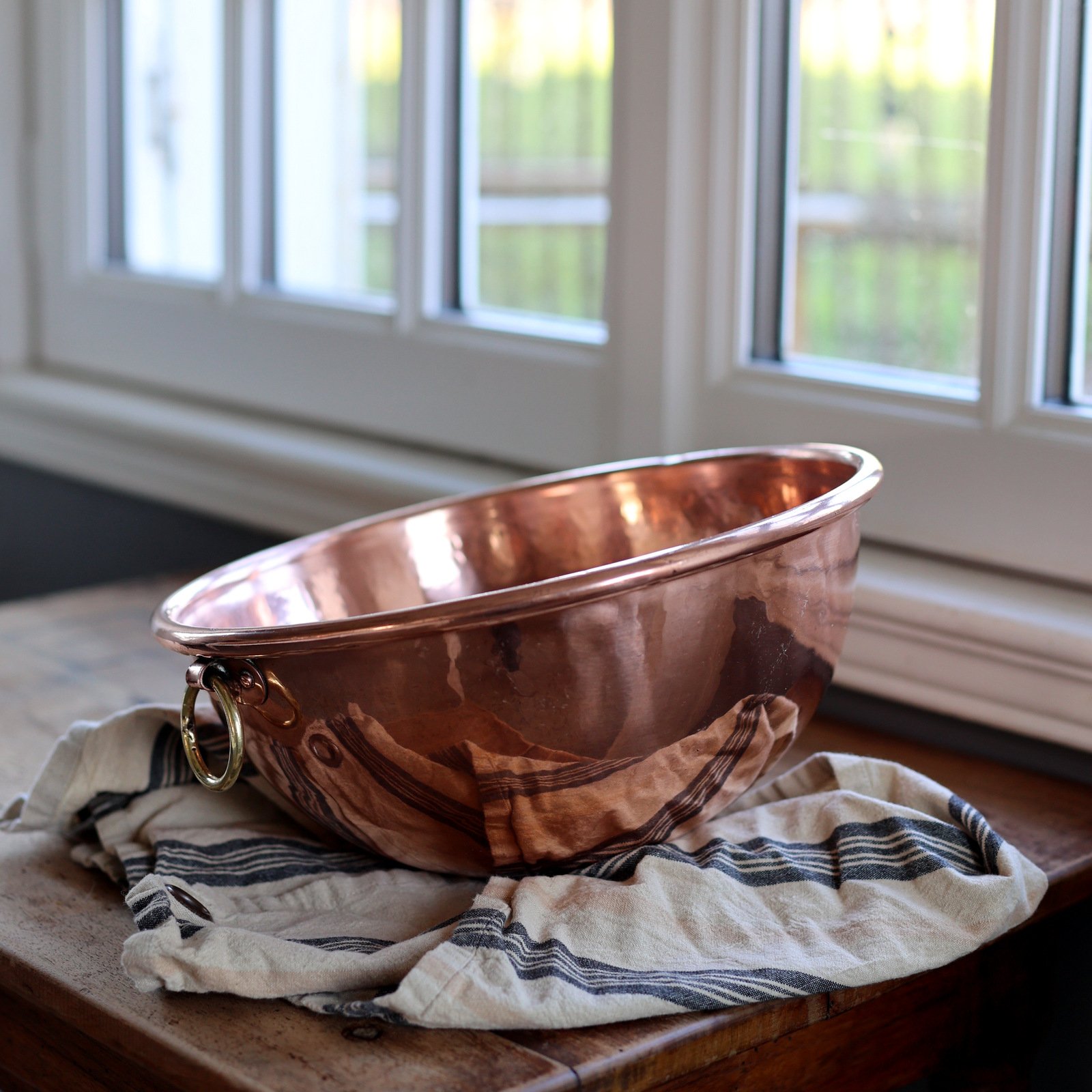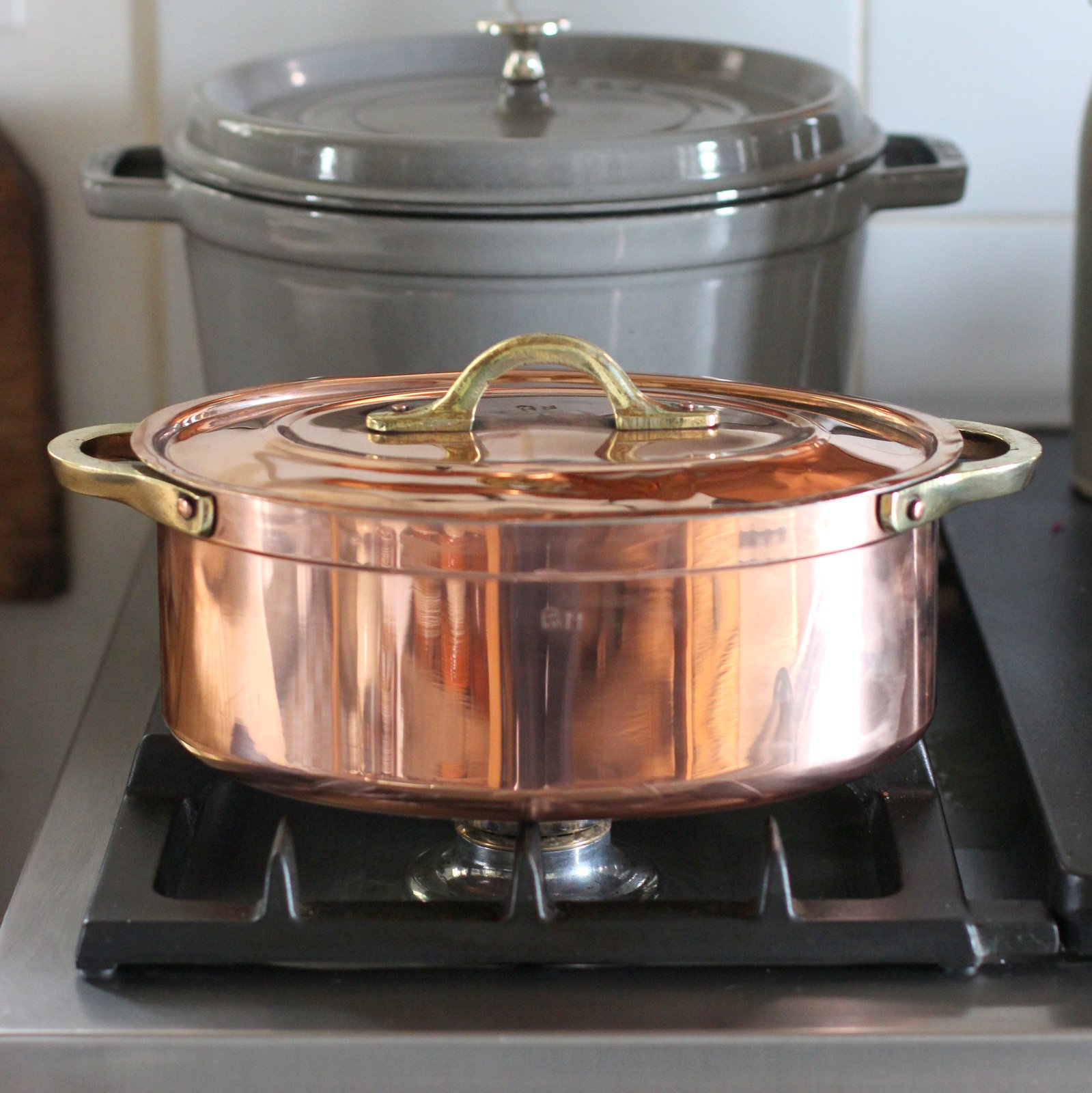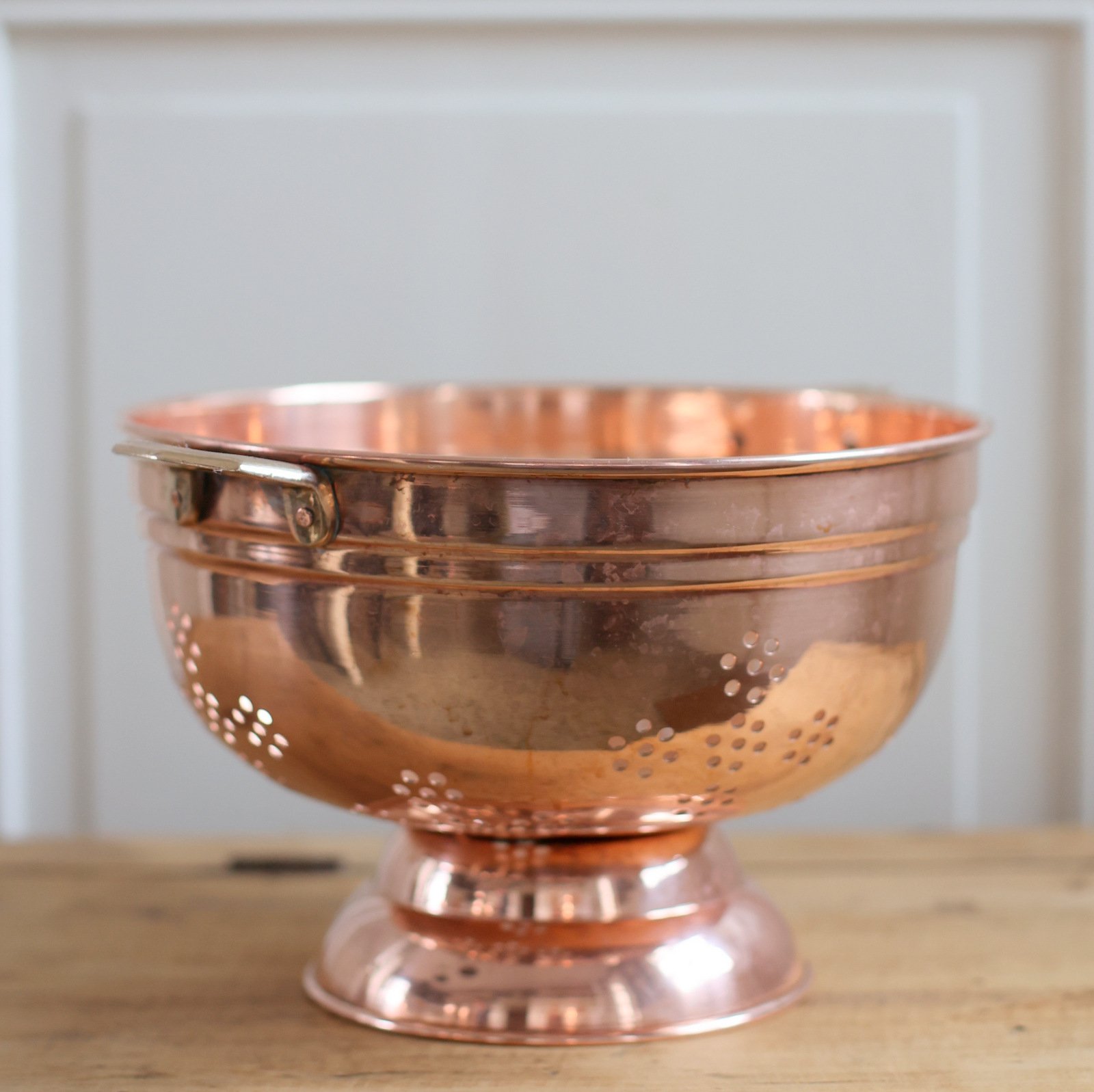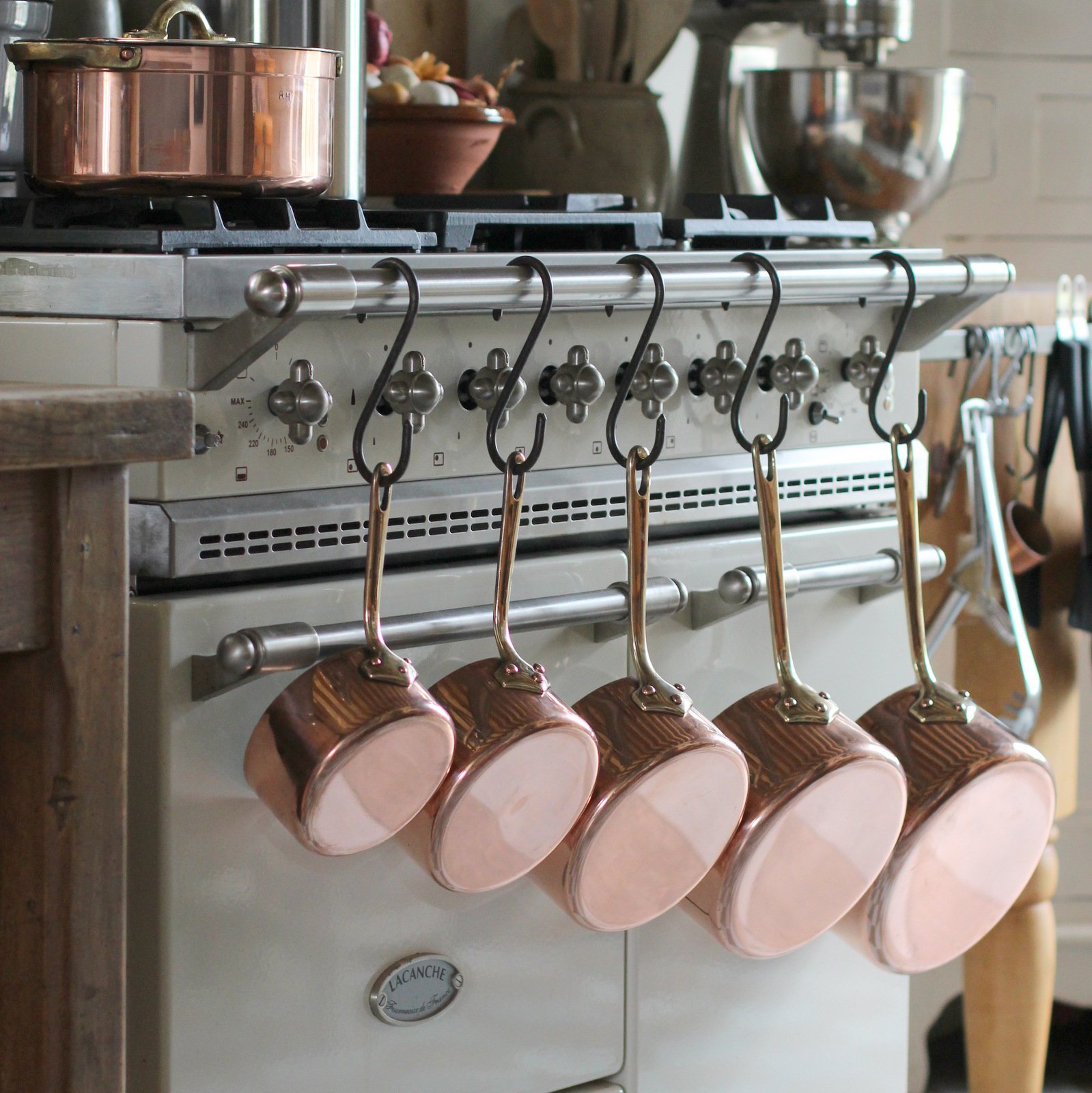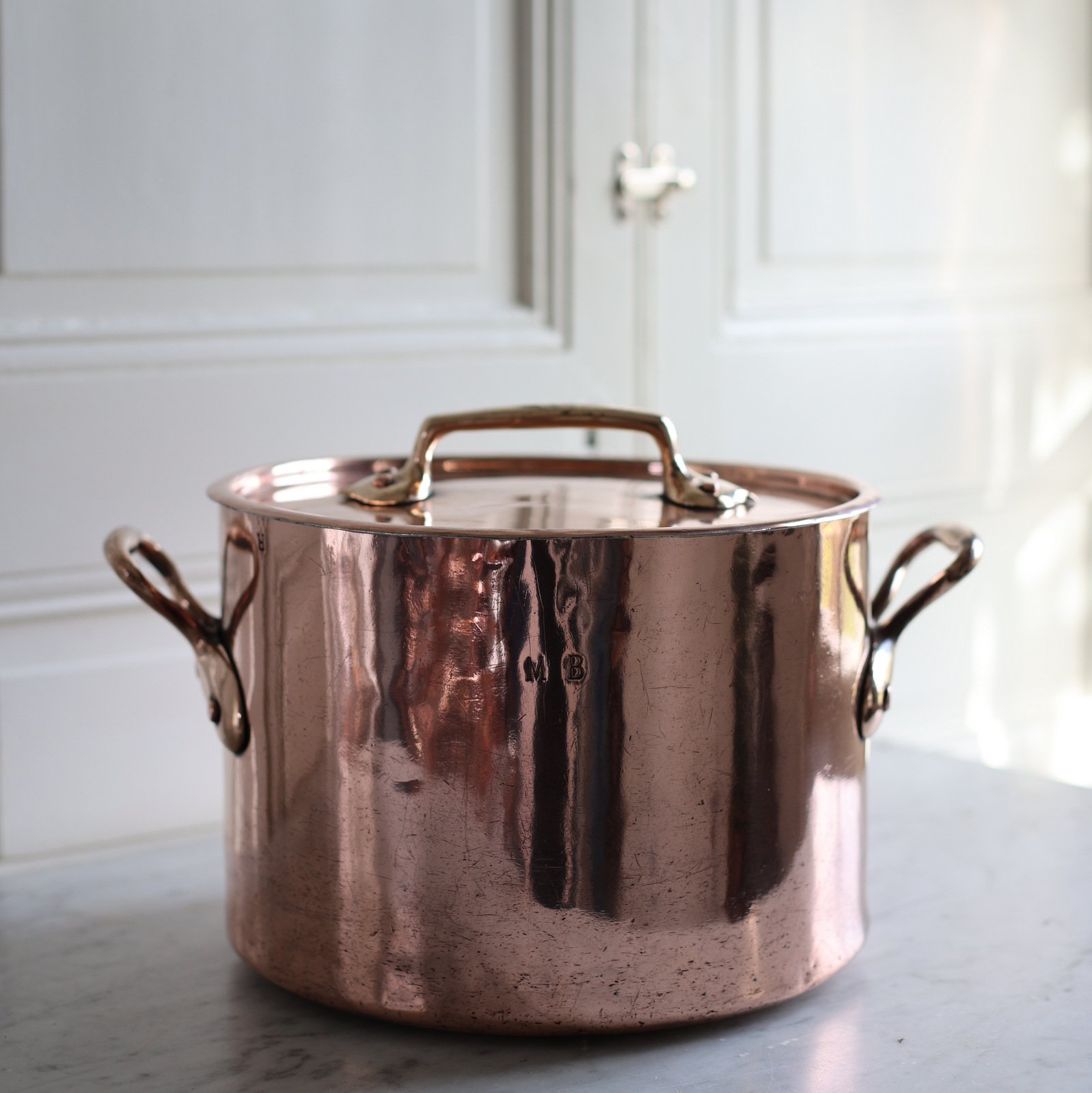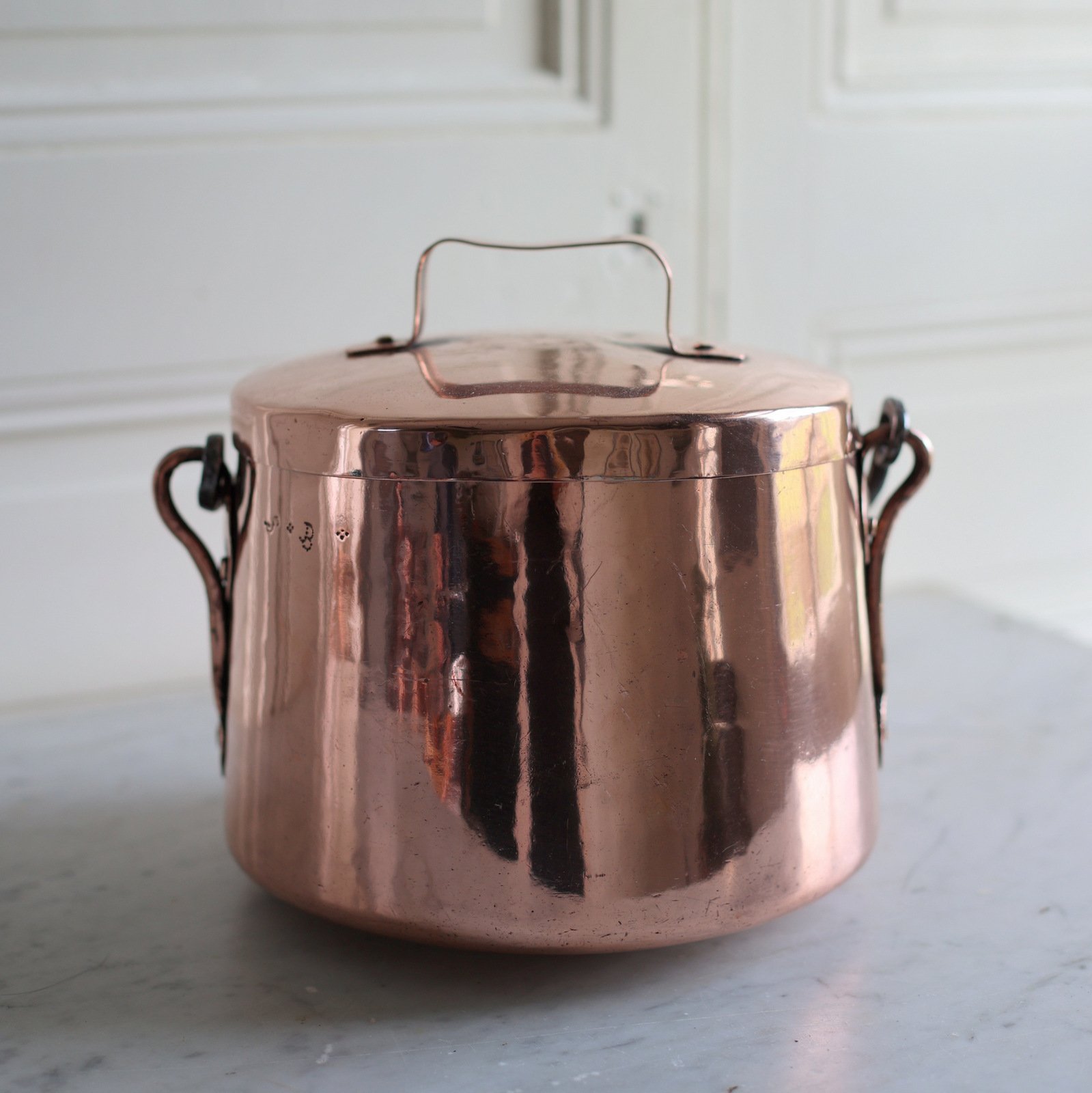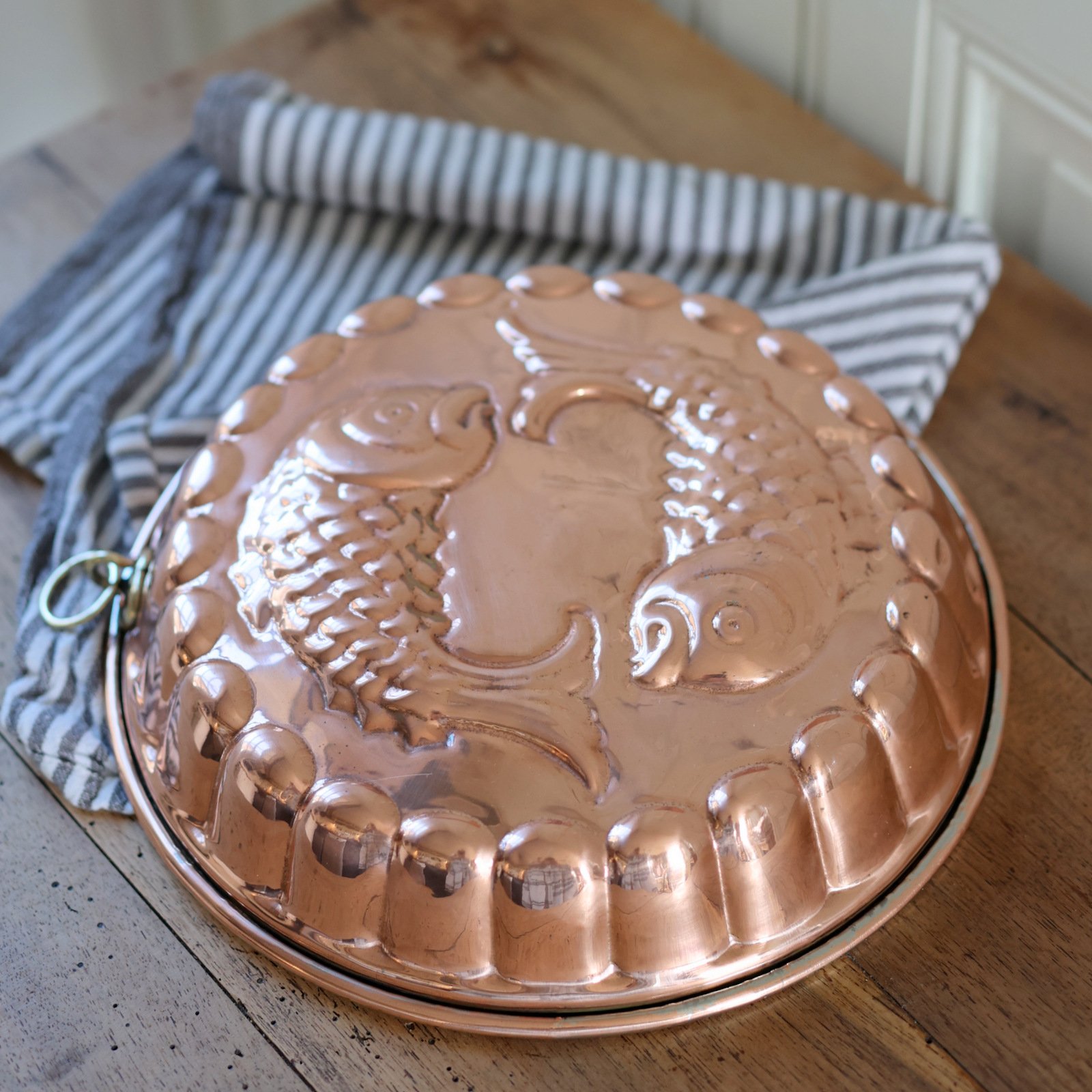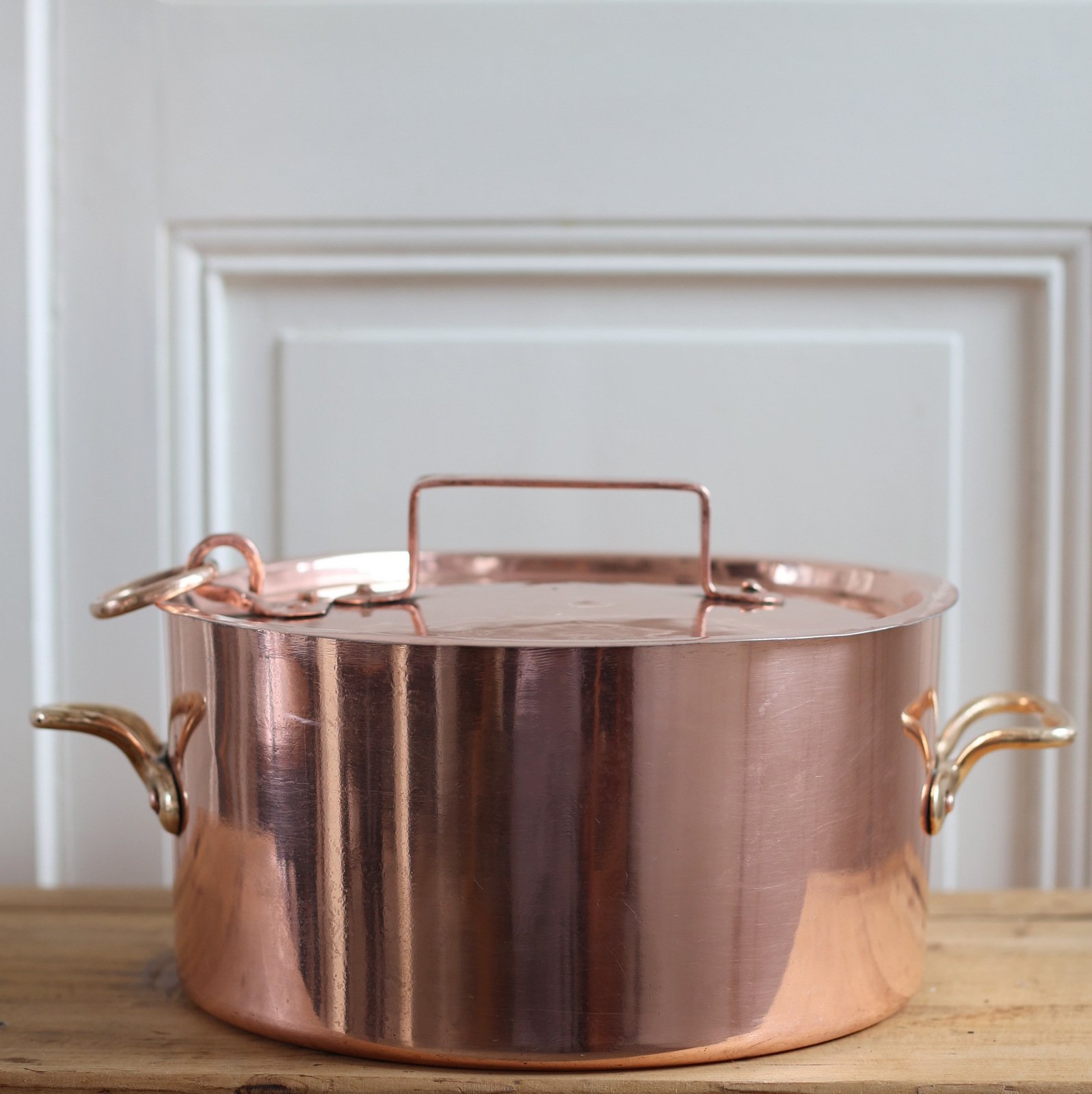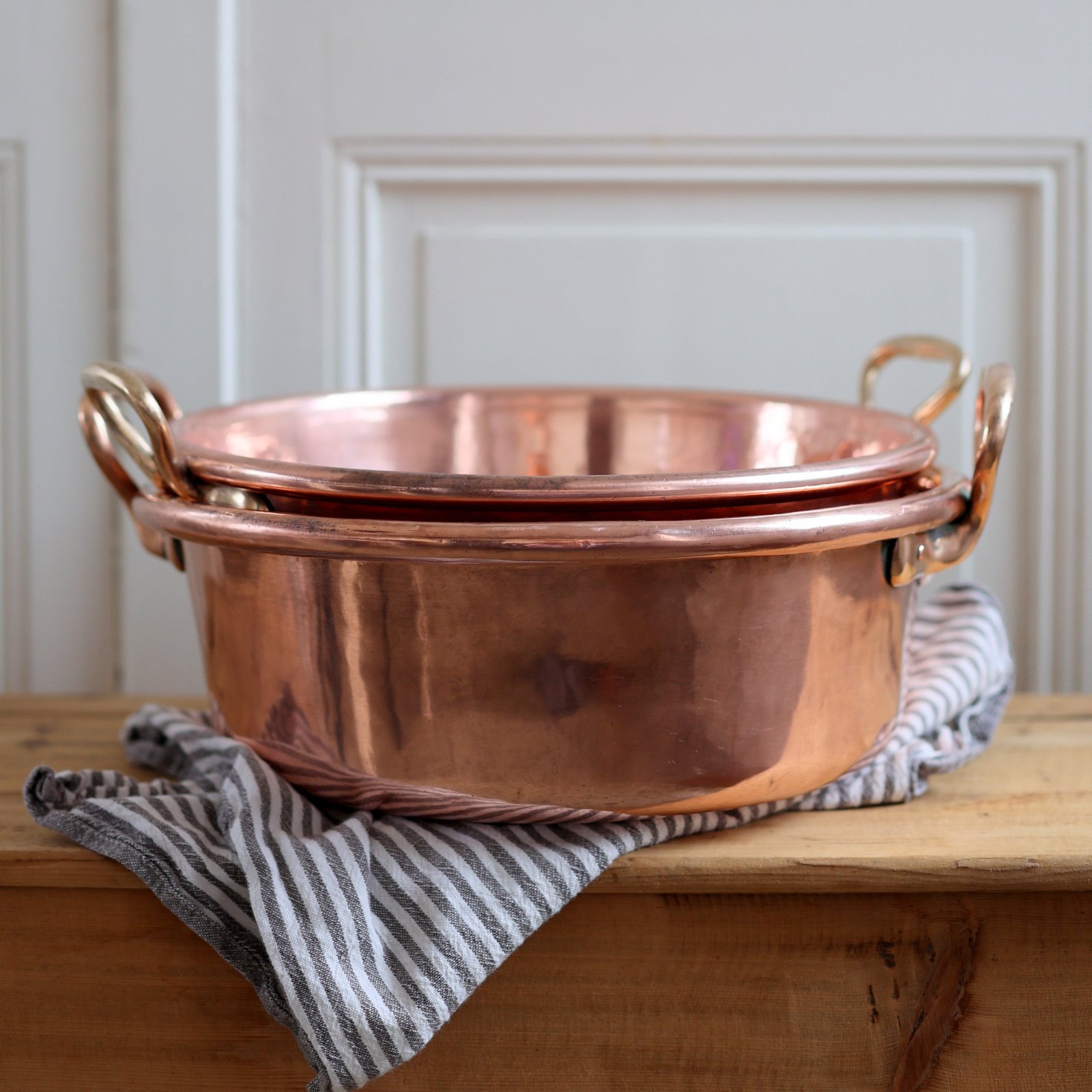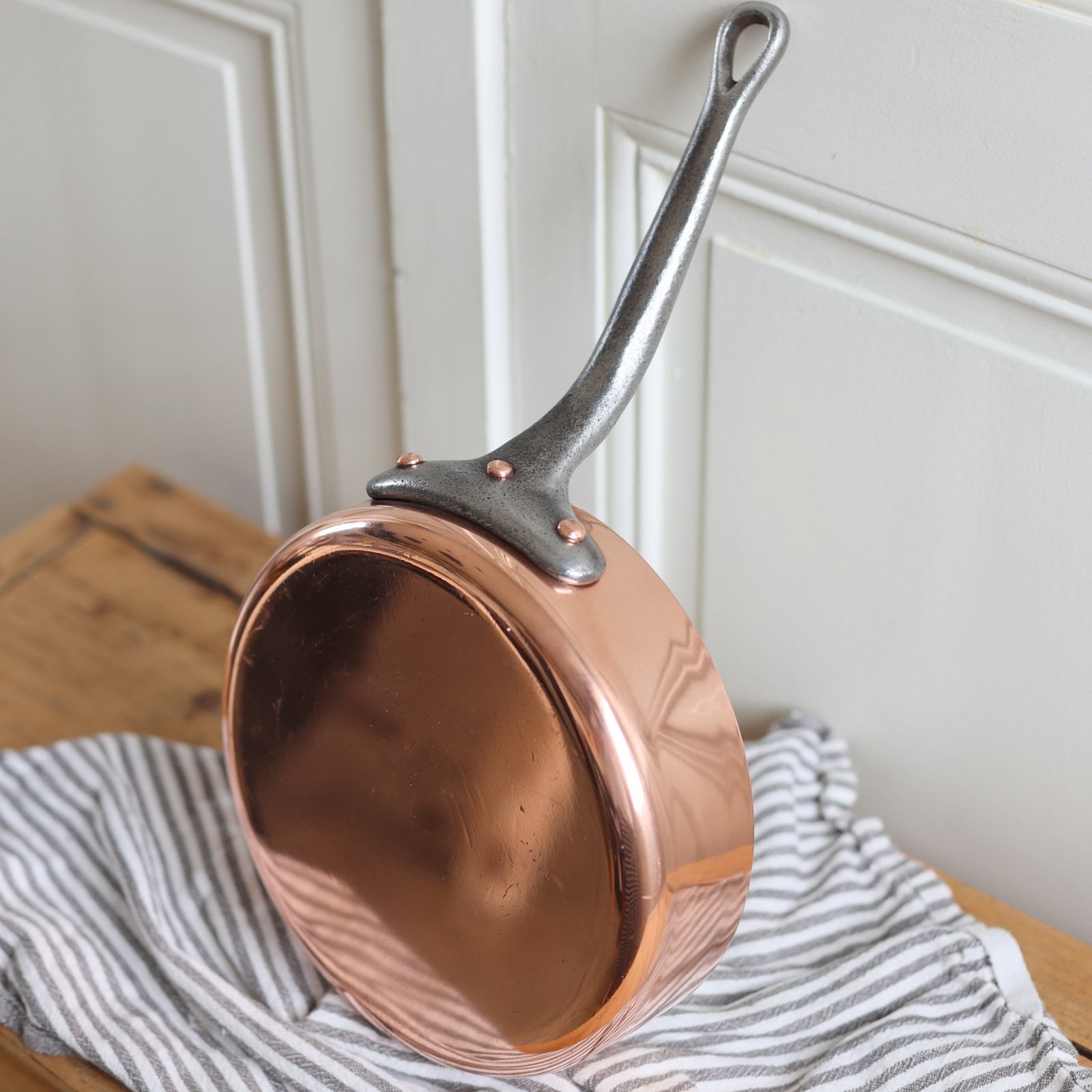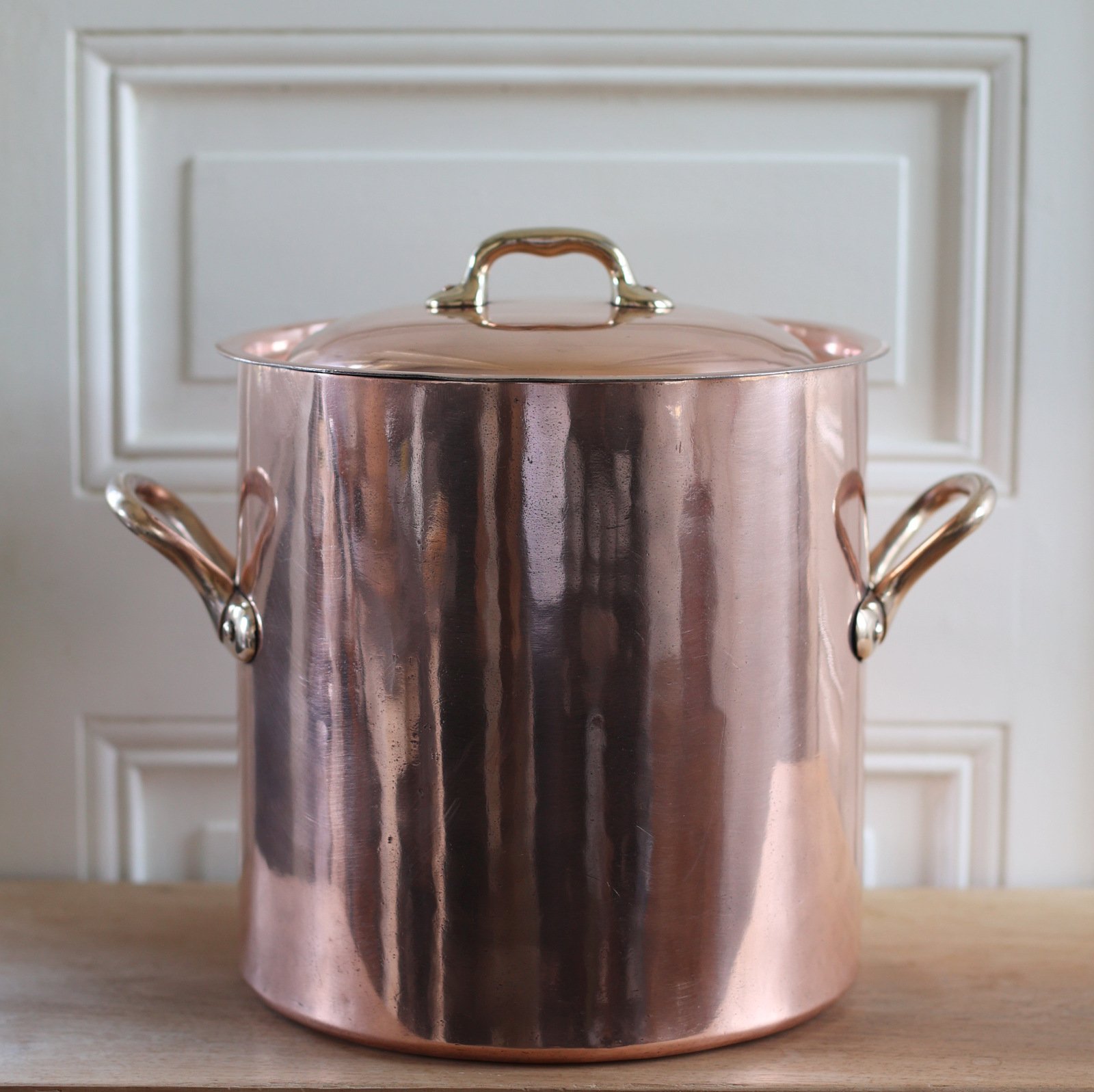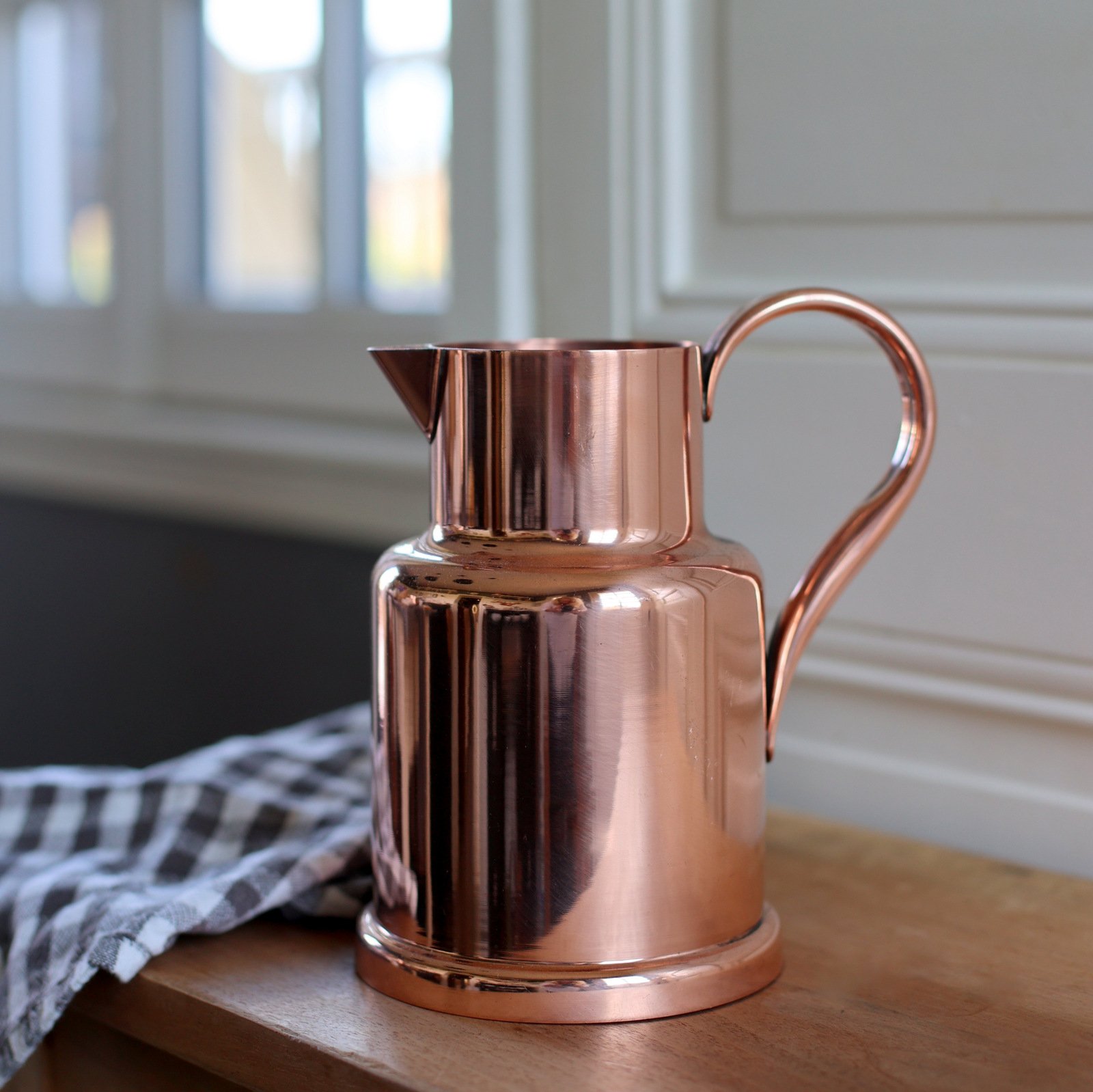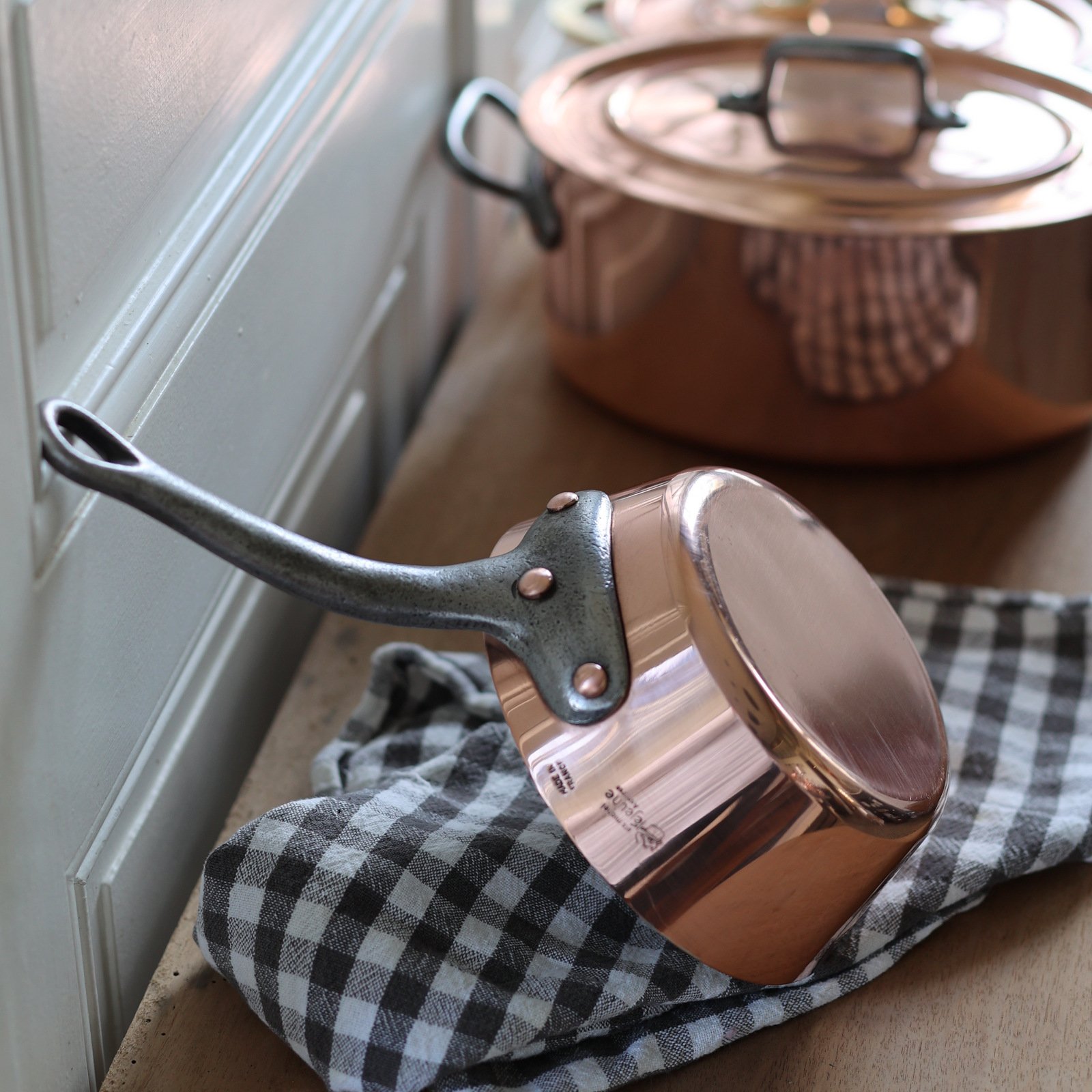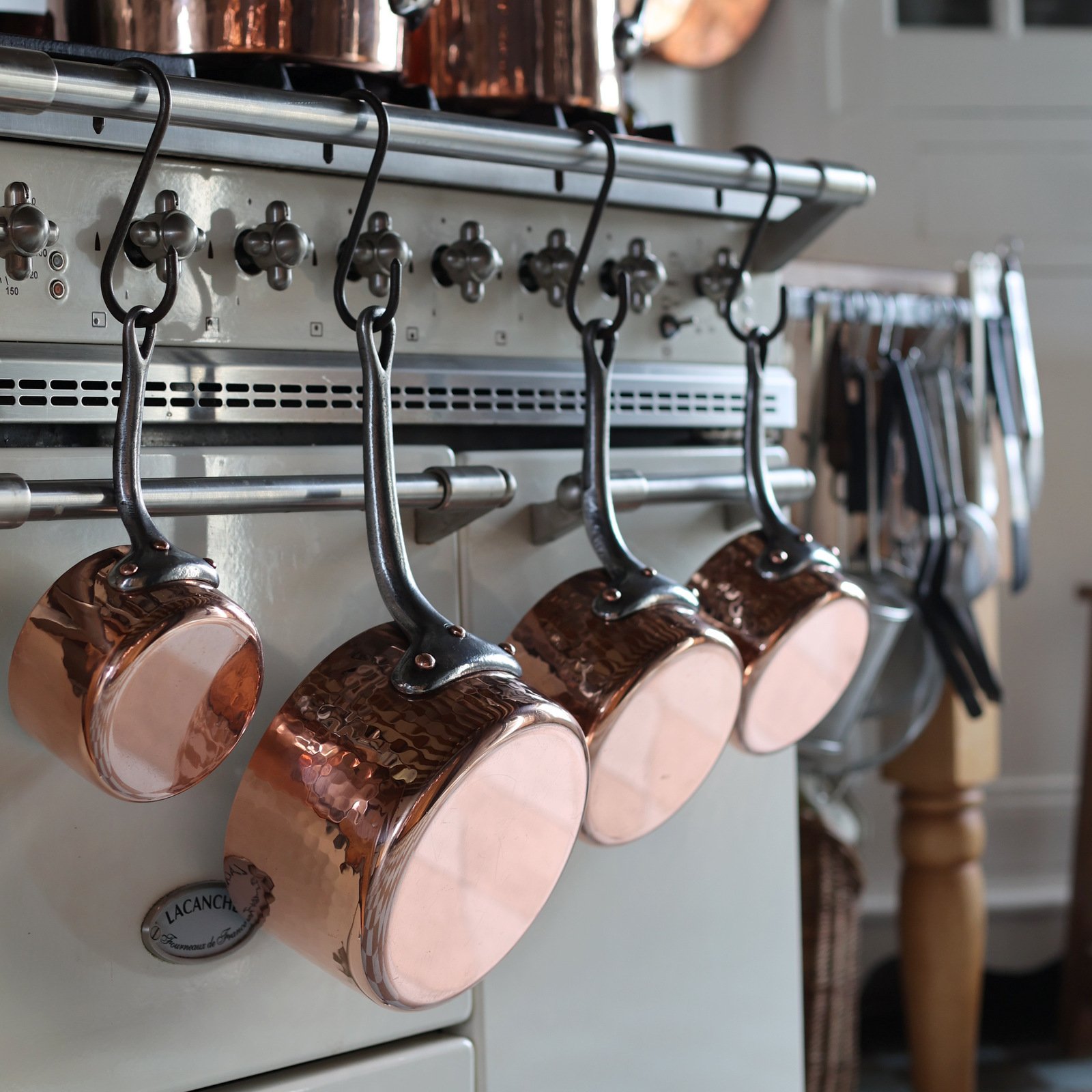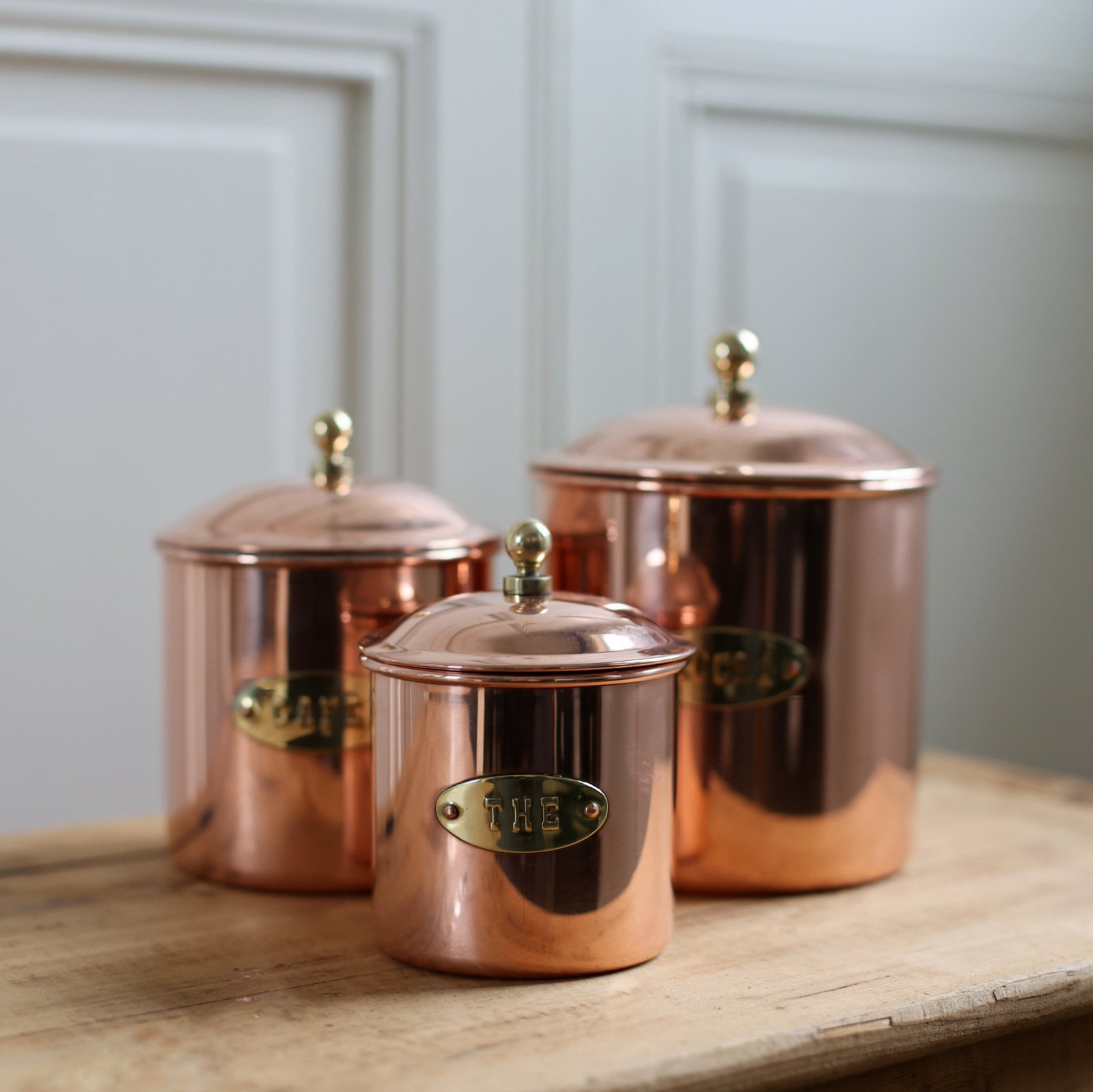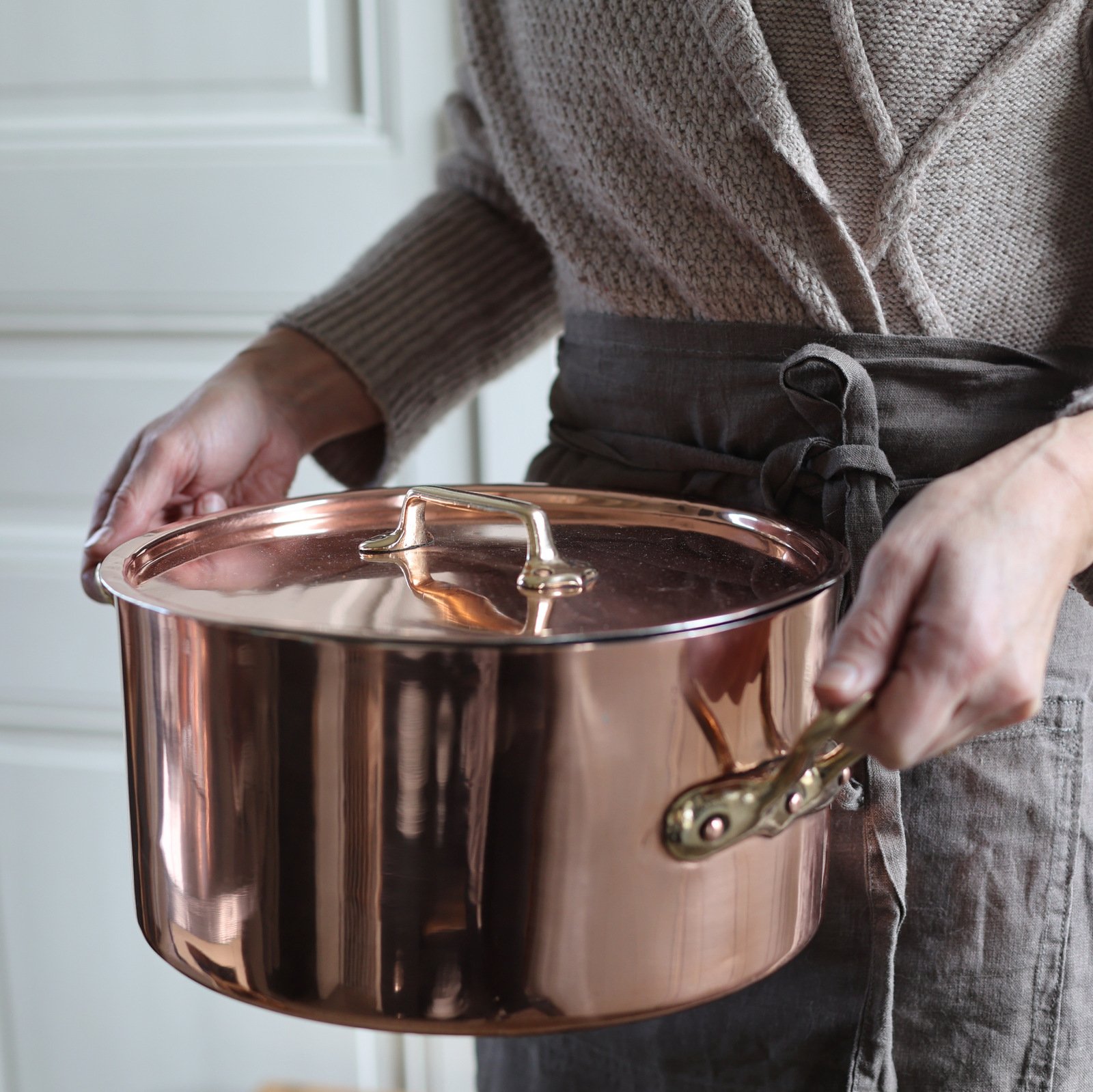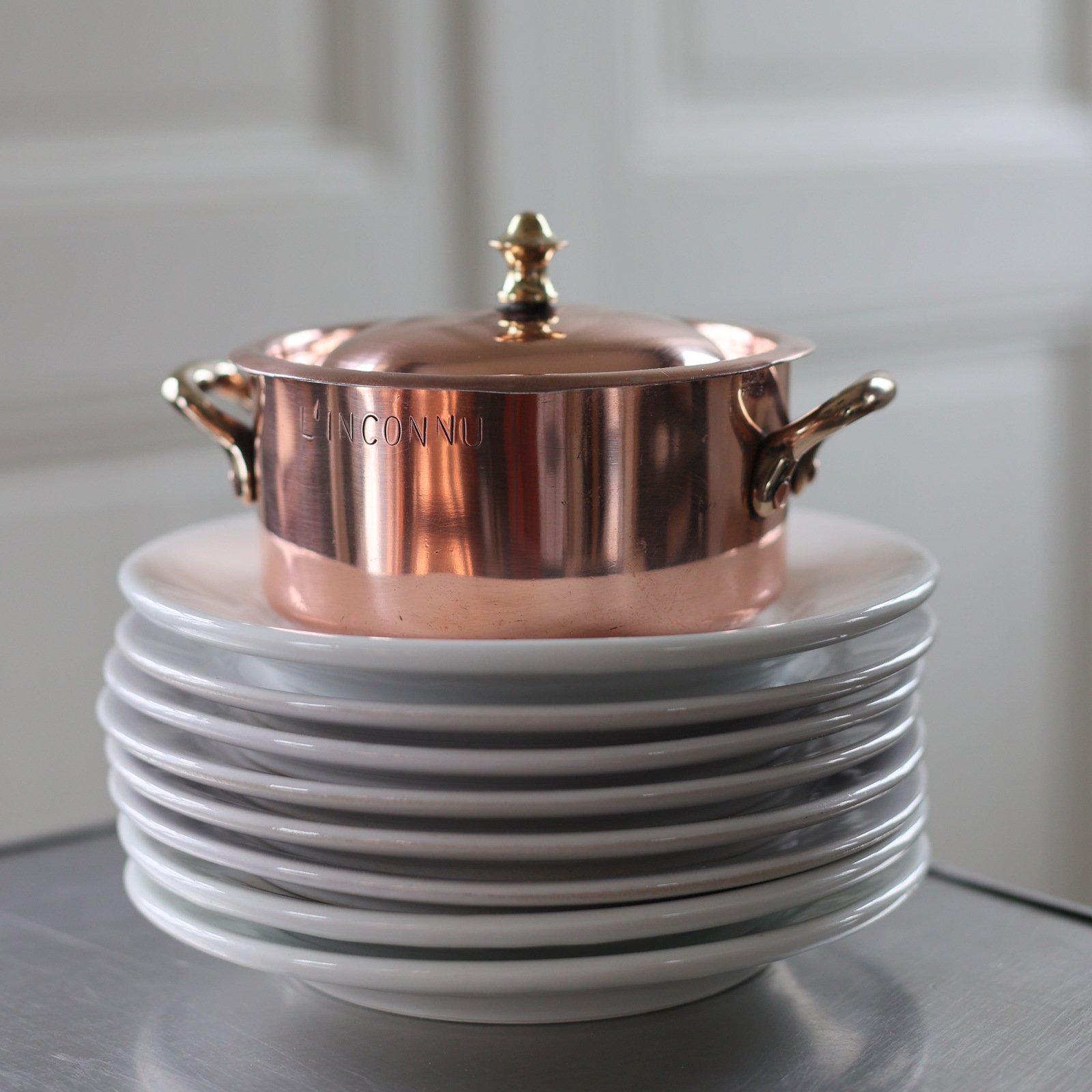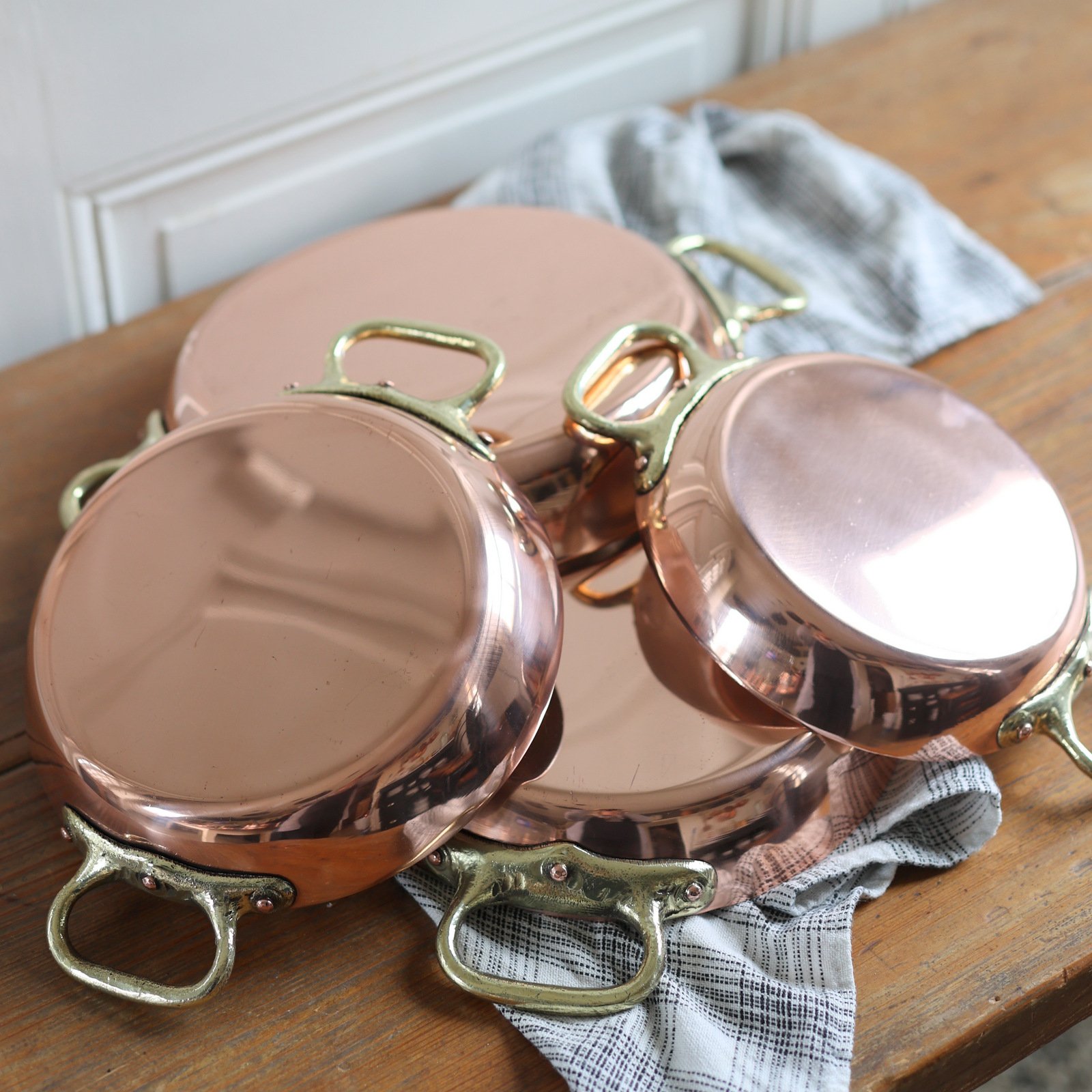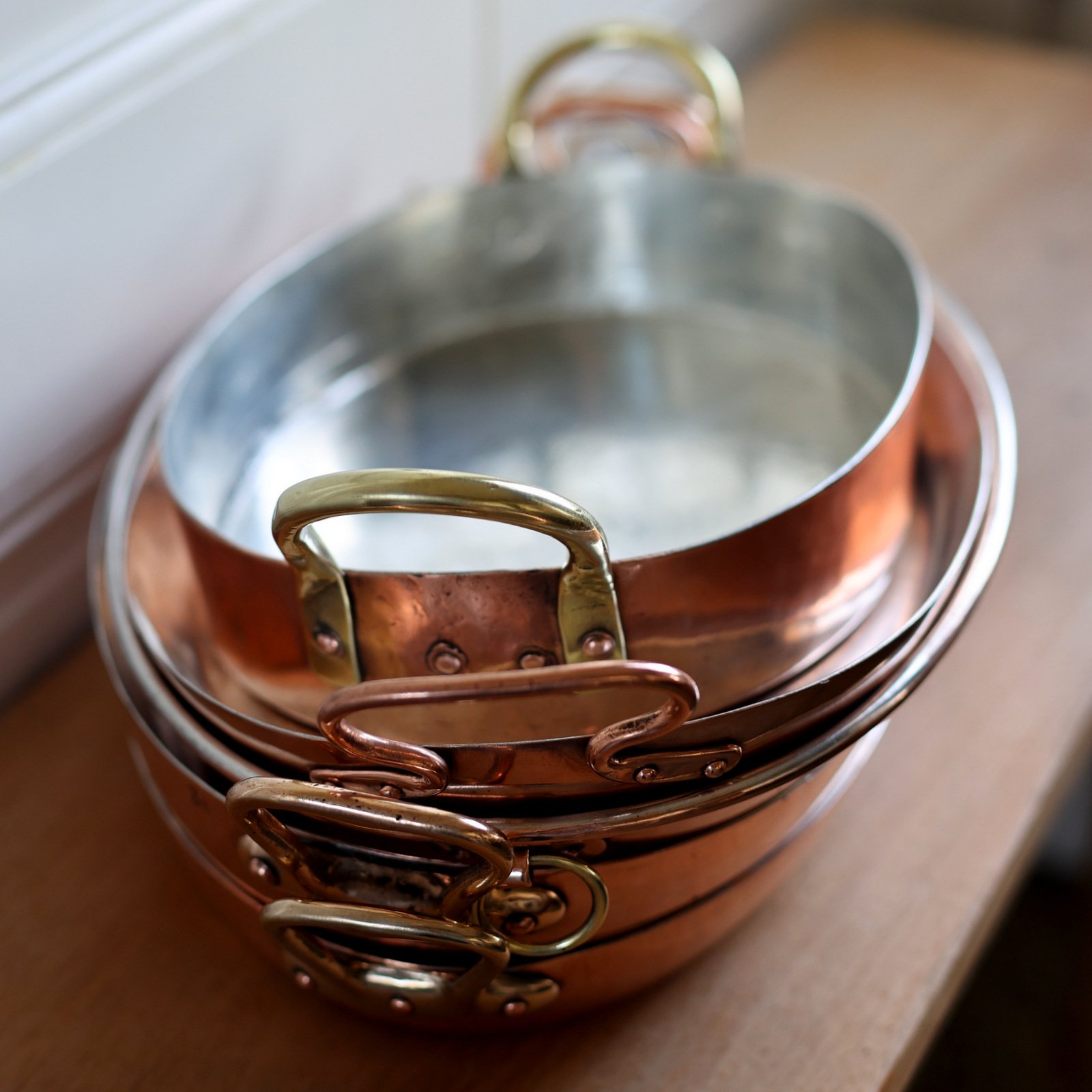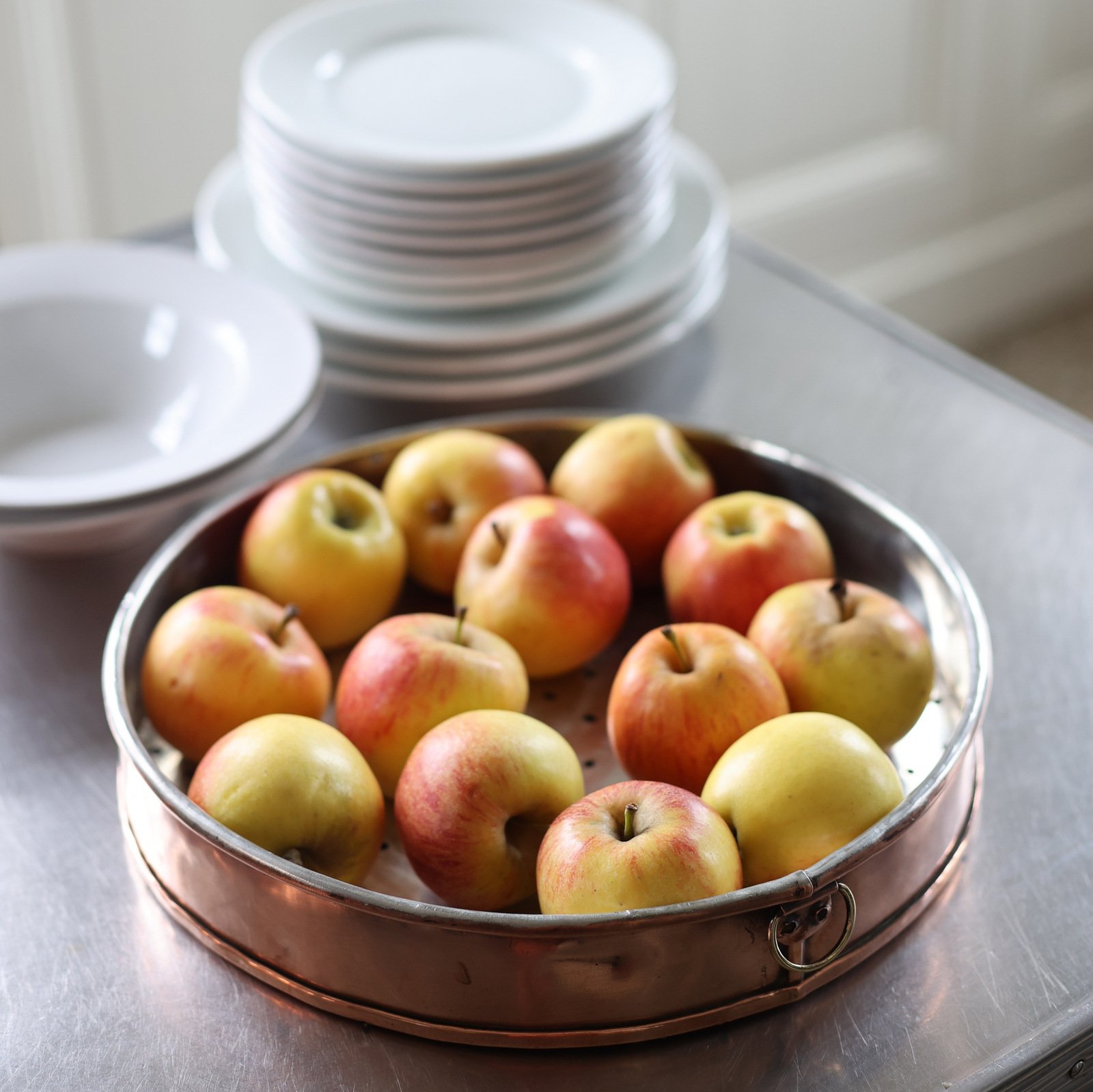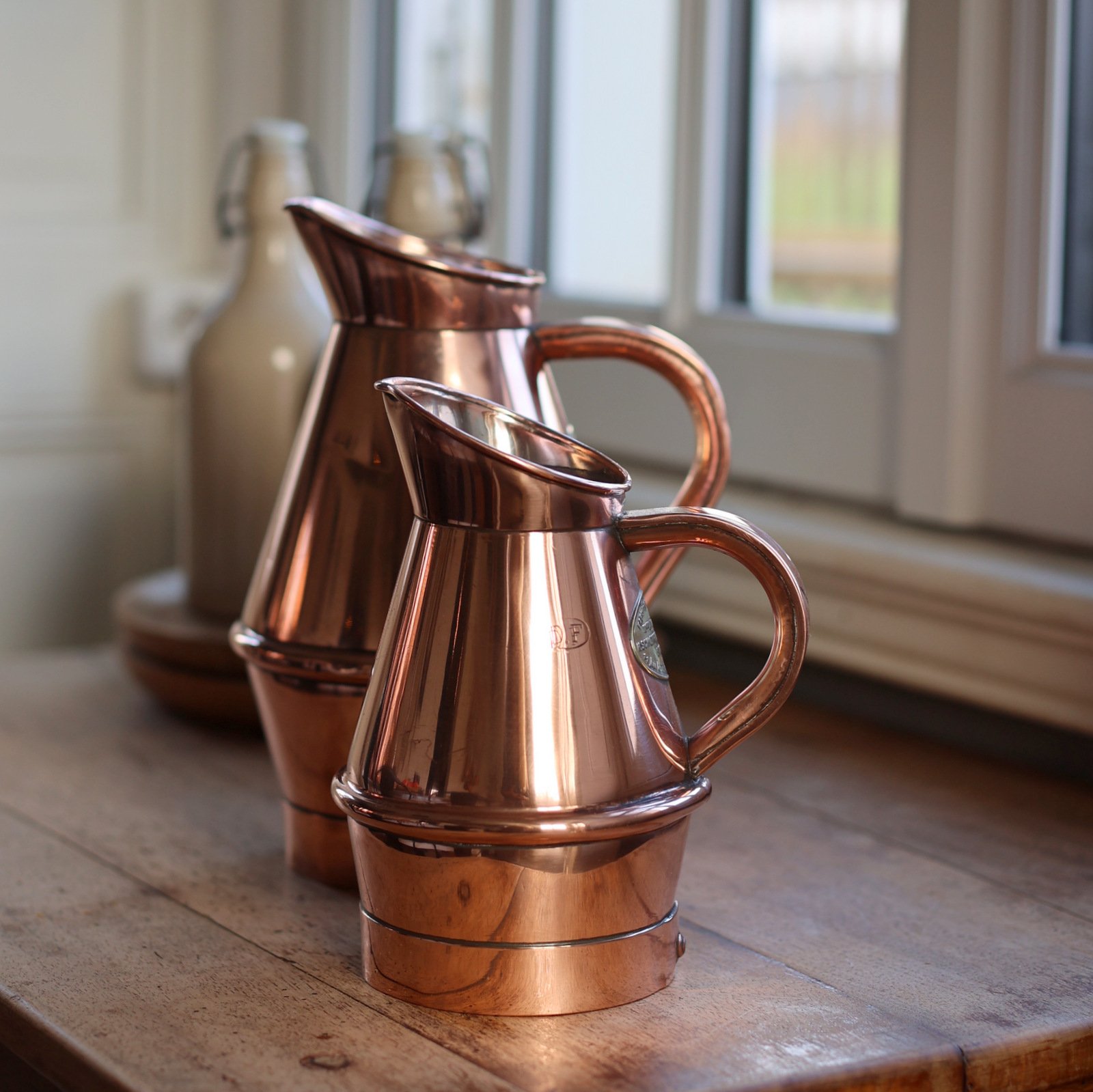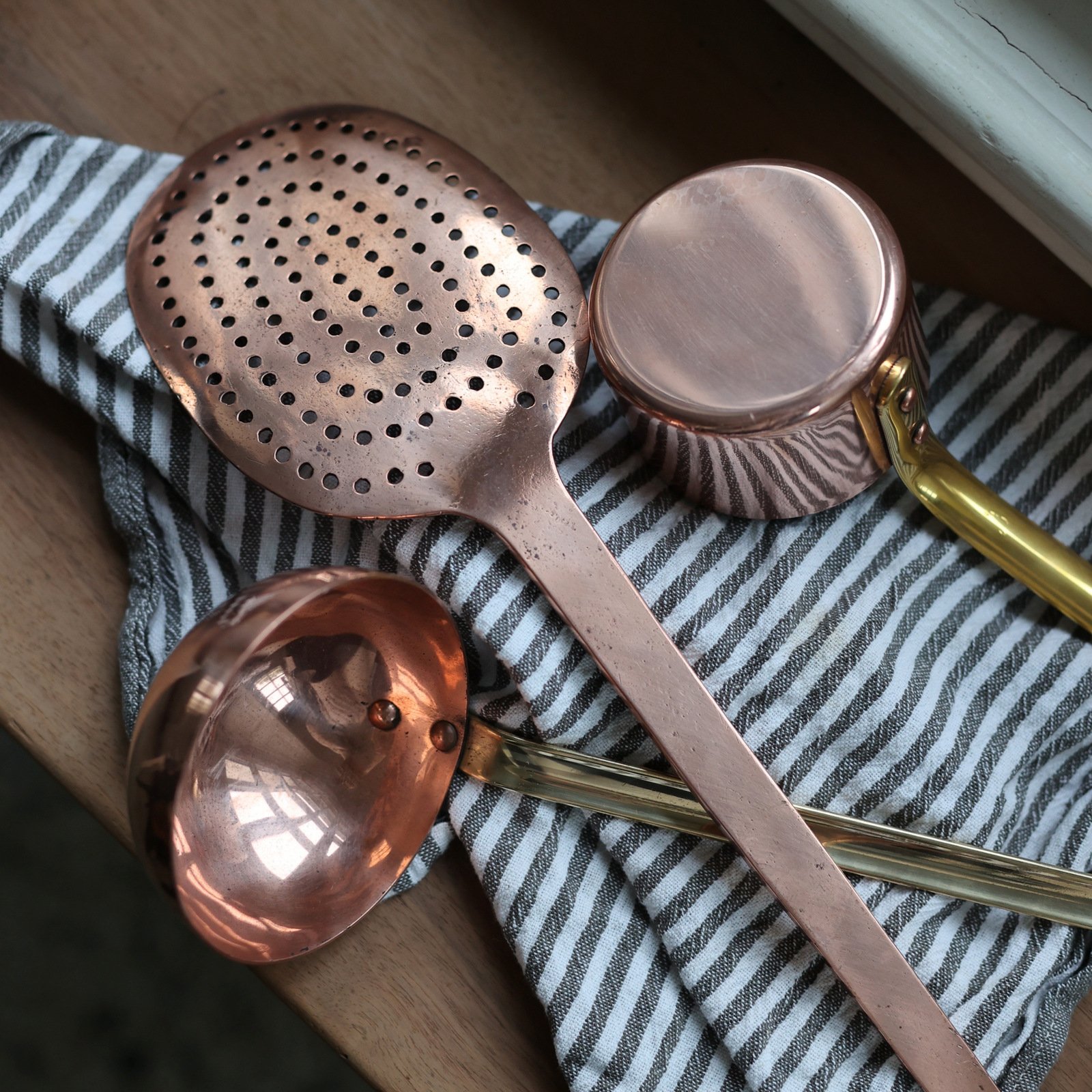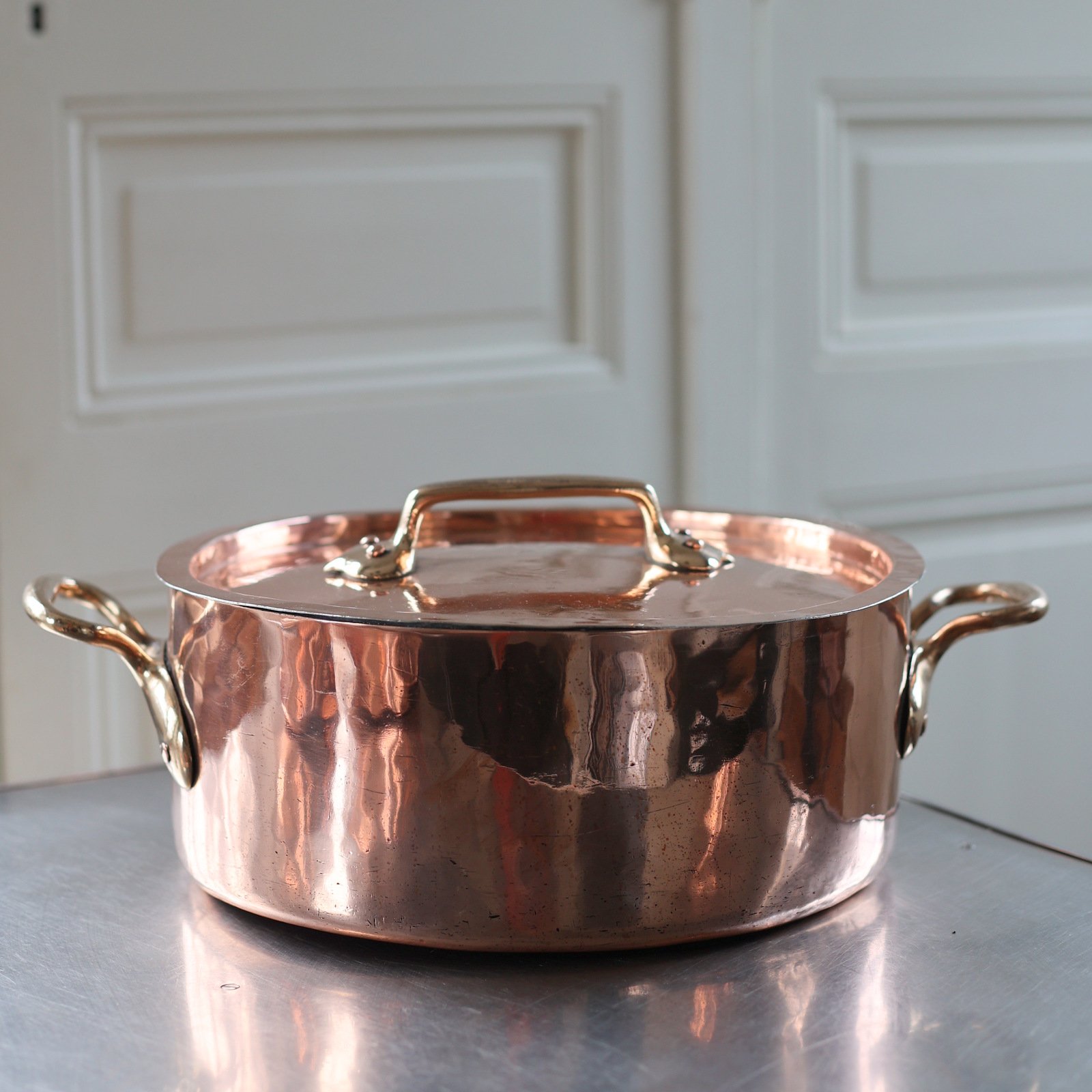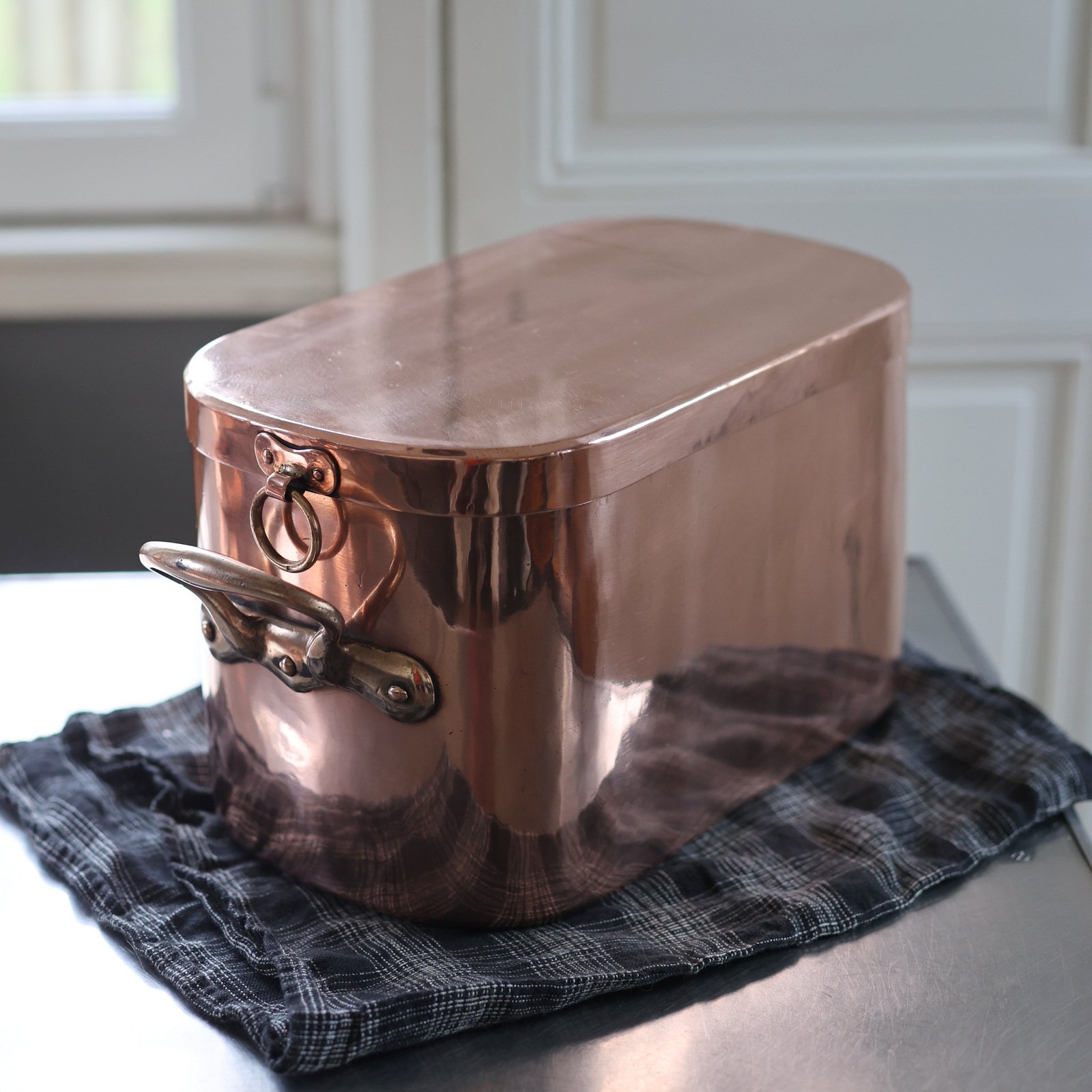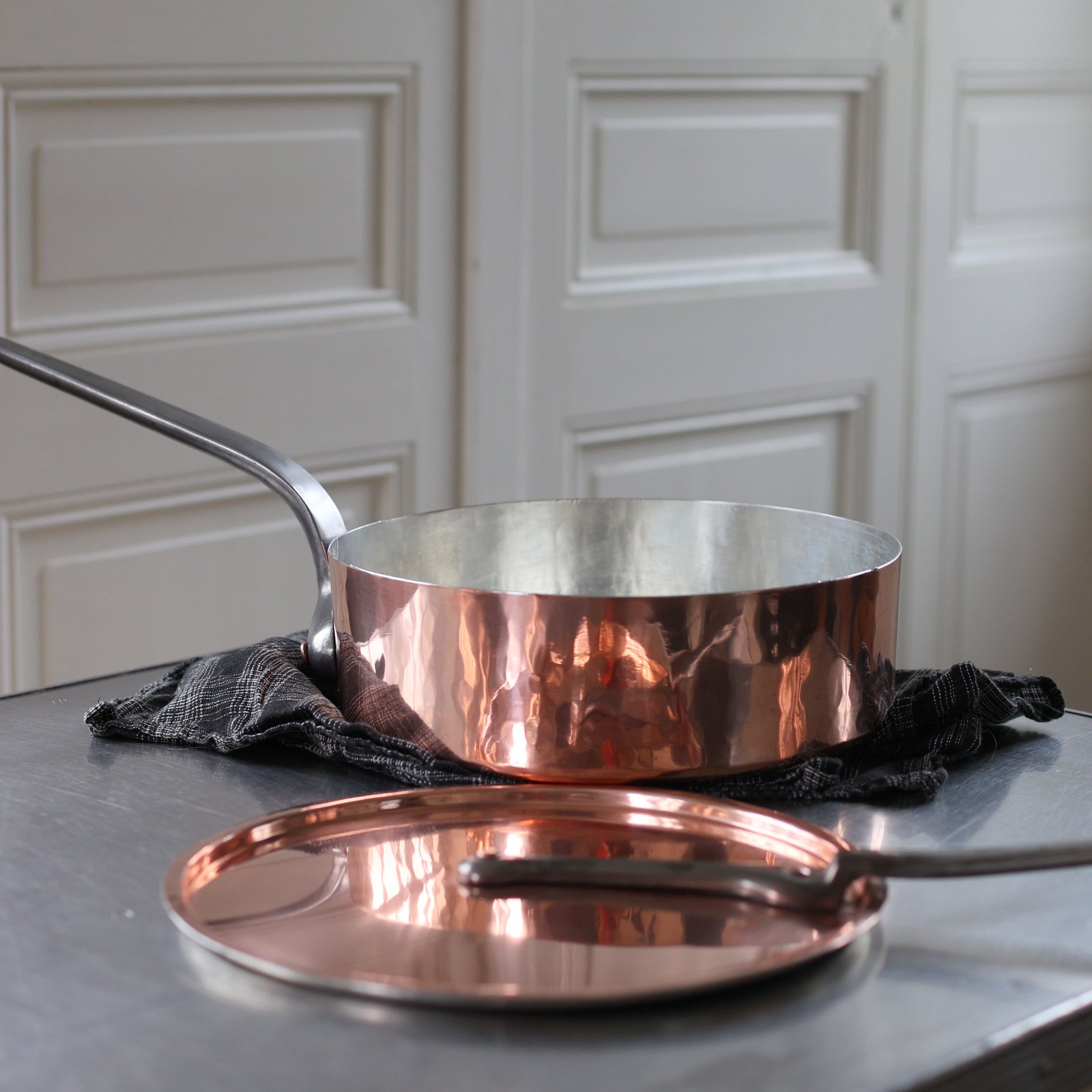Rabbit Hill Kitchen - Copper Cookware
Our Story
Each month you might notice our steady increase of copper-ware in the online shop. I have to admit that I am smitten with the look of beautiful and history filled copper pots in my kitchen. Heavy and substantially made, full of long standing French cooking tradition. Searching for and restoring copper cookware has become a true passion. If you are new to using copper cookware and particularly vintage copper in your kitchen, you are probably starting from exactly where I did a few years ago.
My father-in-law was a chef. When we moved to France he was long retired, but still cooking. My husband's parents owned and operated a restaurant and hotel in Trouville sur Mer for many years and over time he had of course acquired cookware, which was given to us after we moved to Rabbit Hill. I hung it in the barn. Yep. It was pretty, but surely not cook-worthy. I was one of those people that thought that vintage and worn copper cookware was not safe -- and absolutely dangerous to use -- right?! Wrong. What I learned, was that properly restored, it is ready to be used and loved for many, many more years. Evidence of that is the 19th century French pots I have in my kitchen now that I use almost every day ... because they have been restored!
Most all of the cookware, pots and pans are vintage and antique, and although they are restored, retain marks of their long life when they were lovingly used.
New to cooking with copper?
Or maybe you have had copper cookware in your kitchen for years, but are hesitant to use it? Are you curious about why cooking with copper cookware is the preference of great chefs and home cooks worldwide?
We are here to help! NEW in 2023 - Our full-color, 50-page e-book covers every question and detail about cooking with copper in your kitchen! I loved creating this exclusive content for my autumn workshop group! If you missed out on the online course, you can still enjoy the workshop book full of information, tips, do and don'ts, and example recipes -- delivered to your inbox!
UPDATE: We are currently revising our 2023 edition to include even more recipes, tips and information! Check back to get your copy in 2024!
